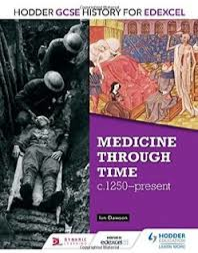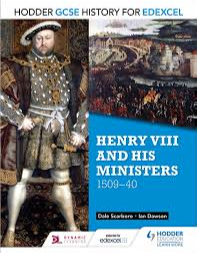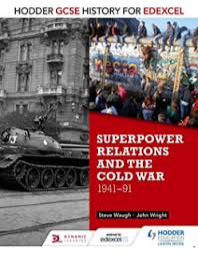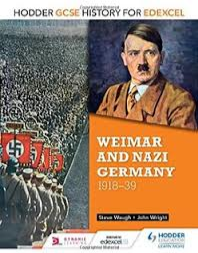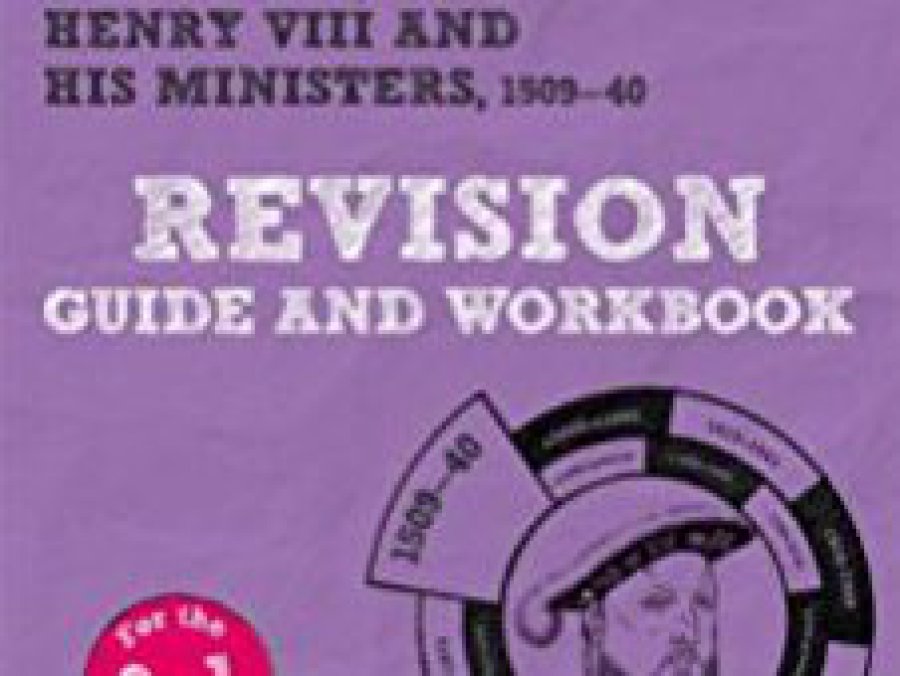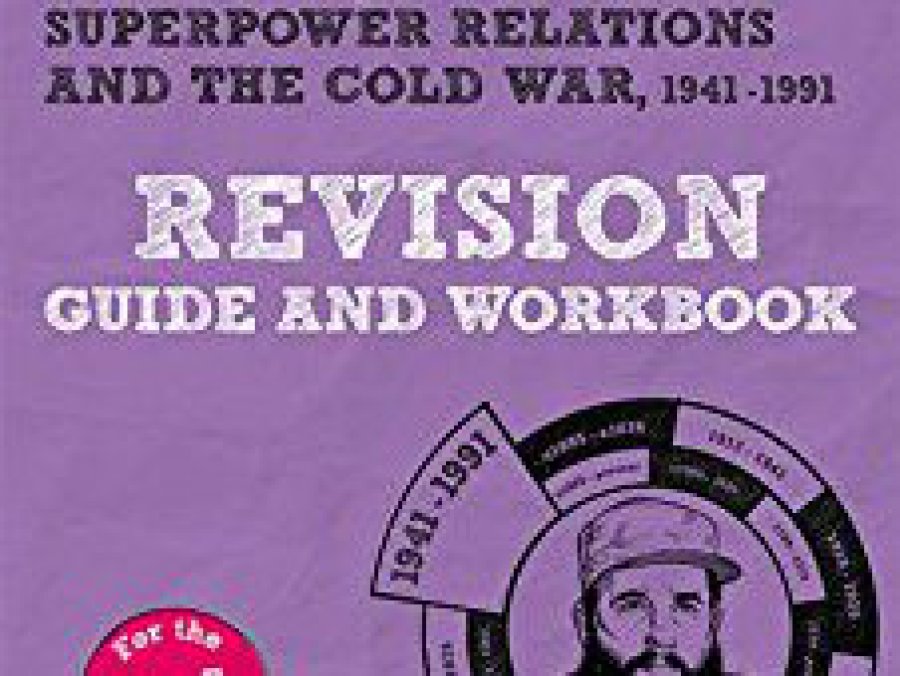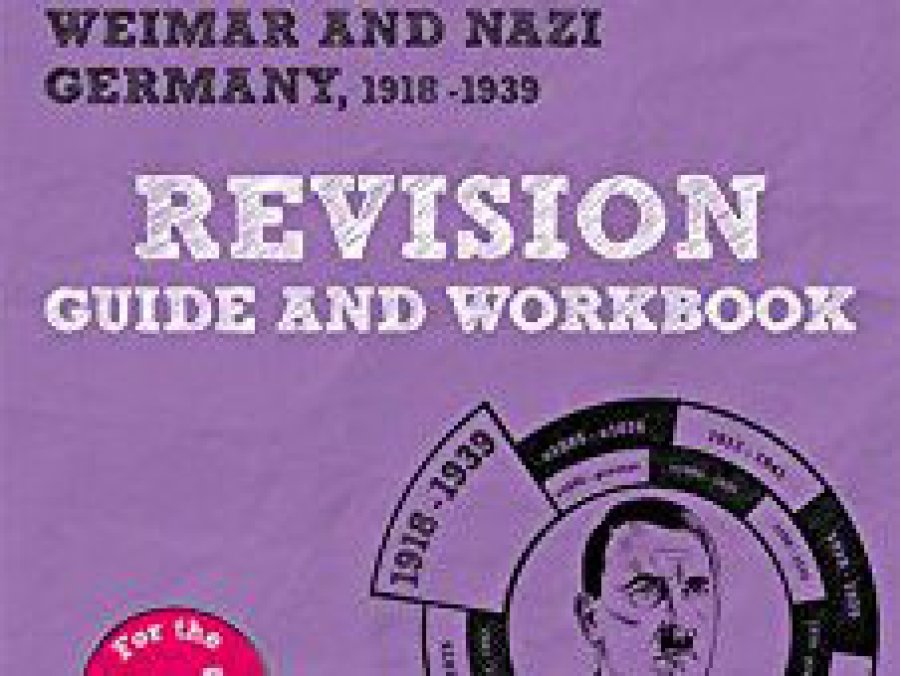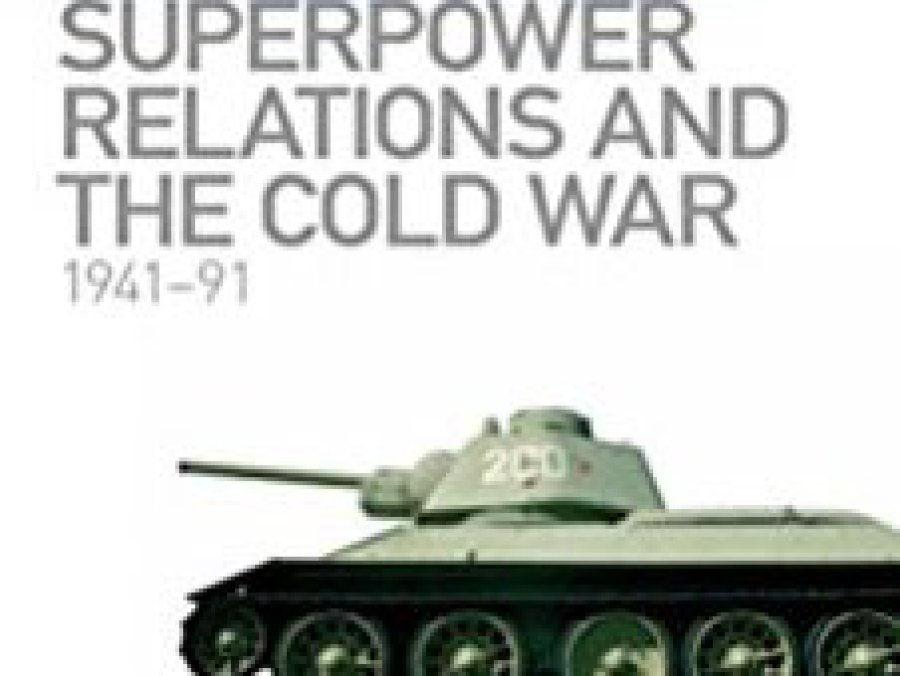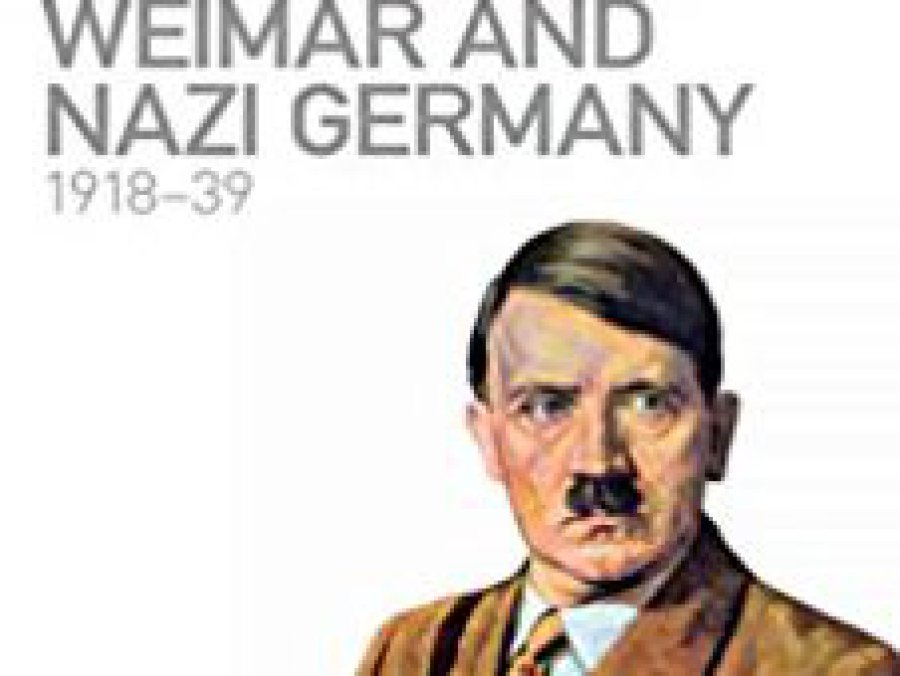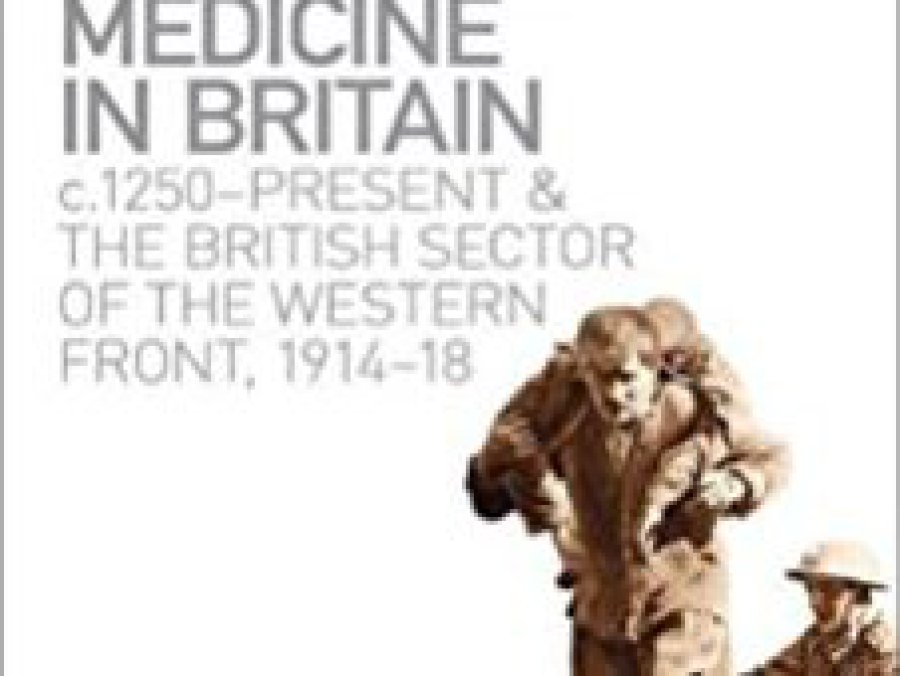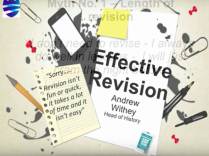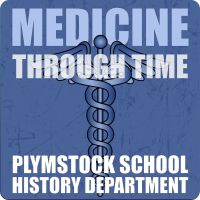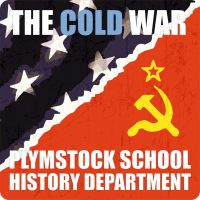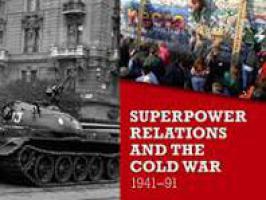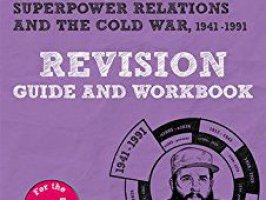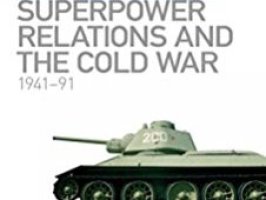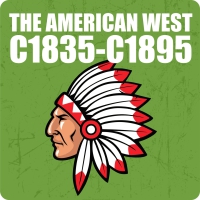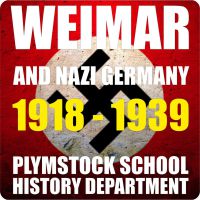GCSE
Revision Guides - Links to Amazon for students to 'Look Inside'
Medicine in Britain, c1250–present and The British sector of the Western Front, 1914–18: injuries, treatment and the trenches
GCSE Paper 1
Assessment
Written examination: 1 hour and 15 minutes
30%* of the qualification
52 marks
Question Guidance Films
History 9 -1 - Medicine and British Sector of the Western Front
c1250–c1500: Medicine in medieval England
1 Ideas about the cause of disease and illness
Supernatural and religious explanations of the cause of disease
Rational explanations: the Theory of the Four Humours and the miasma theory; the continuing influence in England of Hippocrates and Galen.
2 Approaches to prevention and treatment
Approaches to prevention and treatment and their connection with ideas about disease and illness: religious actions, bloodletting and purging, purifying the air, and the use of remedies
New and traditional approaches to hospital care in the thirteenth century
The role of the physician, apothecary and barber surgeon in treatment and care provided within the community and in hospitals, c1250–1500.
3 Case study
Dealing with the Black Death, 1348–49; approaches to treatment and attempts to prevent its spread
Lessons
Lesson - Overview - Students will work through the booklet activity gaining a grasp of medical understanding, change and continuity
Ext- Students will use the BBC Learning Videos to complete a basic introductory overview of the course, focusing upon the causes, treaments and prevention of dsease as well as key individuals:
BBC Teach - Medieval Medicine
BBC Teach - Renaissance Medicine
BBC Teach -18th Century Medicine
BBC Teach -19th Century Medicine
BBC Teach - Modern Medicine
Lesson - Ancient Medicine Overview - students will study the themes relevant to the course and identify the processes of change and continuity.
Students will be required to complete biographies of Hippocrates and Galen
Ext Reading - Bynum: A Little History of Science - Chp 4 - The Father of Medicine
Ext Reading - Bynum: A Little History of Science - Chp 5 - The Emperor's Doctor
Lesson - Approaches to care
Ext - Video - Ben Newmark's Micro Teaching - Medicine in the Medieval Era
Lesson - The Black Death
Lesson - Medieval Apocalypse - Worksheet to support the BBC Documentary
or
Lesson - Ken Follets Journey into the Dark Ages
Ext Reading - Bynum: A Little History of Science - Chp 8 - Out of the Darkness
Lesson - 'Filthy Cities' - Medieval London - Worksheet to support the Dan Snow presented BBC Documentary
Lesson - Why was there so little progress in Medieval Medicine? What factors contributed to the lack of progress in Medieval Medicine. Students will consider the realtive importance of:
1. The Catholic Church
2. Medieval Government
3. The role of Education
4. Conservatism
5. The role of Individuals
Ext - Video - Ben Newmark's Micro Teaching - Why was there so little progress in Medieval Medicine?
Lesson - The Renaissance
Assessment
Ext - Video - Ben Newmark's Micro Teaching - Was the Renaissnace medically significant?
Ext Reading - Bynum: A Little History of Science - Chp 10 - Uncovering the Human Body
Lesson - Vesalius - Who was he? What did he do? Why was he significant? What were the limiting factors associated with his discovery?
Video
Ext - Video - Ben Newmark's Micro Teaching - Vesalius
Lesson - Harvey - Who was he? What did he do? Why was he significant? What were the limiting factors associated with his discovery?
Anatomy - Harvey, trained at Padua in Italy and brought his ideas back to England where through the scientific method he challenged the ideas of Galen. By publishing his work his ideas spread rapidly. His main focus was on the motion of the blodd and the functioning of the heart. Though he could not find the capillaries he nonetheless predicted their existance before the invention of the microscope proved it.
Ext Reading - Bynum: A Little History of Science - Chp 13 - Round and Round
Lesson - Pare - Who was he? What did he do? Why was he significant? What were the limiting factors associated with his discovery?
Surgeon. Pare was the battlefield surgeon who advanced the practice of amputation and started the process of introducing more humane surgery. When he ran out of boiling oil to seal the wounds of injured soldiers, Pare used bandages and balms instead as a last resort to save his patients. Surpisingly to him, he found this procedure saved more lives than the traditional use of cautery irons and boiling oil.
Lesson - Training and Physicians - How much change actually occured during the Renaissance? Students will study the impact of change across a series of themes to quantfy overall how much change took place:
- Cause and Diagnosis of Disease
- Treatment and Cures
- Prevention
- Healers and Hospitals
- Scientific Developments
- The work of Vesalius
- The work of Harvey
Ext Readng - Ian Mortimer - A Time Traveller's Guide to Elizabethan England
Lesson - The Great Plague - How did Renaissance government and society tackle the final outbreak of the plague in 1665? What had changed and stayed the smae since the arrival of the Black Death in 1348?
'The faeces of the earth'
Worksheet to support the Channel 4 Documentary
Lesson - How much Progress?
Ext - Video - Ben Newmark's Micro Teaching - Was the Renaissnace medically significant?
Ext Reading - Ian Mortimer - A Time Traveller's Guide to Restoration Britain
Assessment
Lesson - Jenner - Who was he? What did he do? Why was he significant? What were the limiting factors associated with his discovery?
Ext Reading - Bynum: A Little History of Science - Chp 27 - Coughs, Sneezes and Diseases
Lesson - Pasteur and Koch - Who were they? What did they do? Why were they significant? What were the limiting factors associated with their discoveries?
Louis Pastuer and Robert Koch would lead to a revolution in our understanding of the cause of disease, spurred on by national rivalries and technological innovation. Pasteurs theory of 1861 would kill belief in miasma and the four humours, correctly linking airborne germs with infection. His discovery, though lacking any practical application, would spur Koch to identify specific germs and move one step closer to killing them. This therefore, links to the work of Joseph Lister and antiseptics, as well as later work, carried out by Ehrlich, into Magic Bullets.
Ext - Video - Ben Newmark's Micro Teaching - Why was the discovery of Germ Theory so important?
Lesson - Nightingale - Who was she? What did she do? Why was she significant? What were the limiting factors associated with her discovery?
Lesson - Vaccinations
Lesson - Public Health - The 1848 and 1875 Public Health Acts
With the changes in British cities brought about by the Industrial Revolution government legislation was required to tackle the huge health issues in them. Yet, the reticence of the British government to end its laissez faire practices meant that the First Public Health Act was nothing more than advice. Then due to scientific discoveries, germ theory, the wider sharing of the vote and events like the Great Stink of 1858 the Second Public Health Act of 1875 was far more comprhensive and strict.
Worksheet - Wonders of the Industrial World - The Sewer King
Ext - Video - Ben Newmark's Micro Teaching - British Public Health between 1750 & 1850
Ext - Video - Ben Newmark's Micro Teaching - British Public Health between 1850 & 1867
Ext - Video - Ben Newmark's Micro Teaching - British Public Health between 1867 & the late 1800's
Ext - Video - Ben Newmark's Micro Teaching - British Public Health between 1880 & 1914
Lesson - Snow and Cholera - Who was he? What did he do? Why was he significant? What were the limiting factors associated with his discovery?
Lesson - Chadwick - Who was he? What did he do? Why was he significant? What were the limiting factors associated with his discovery?
Chadwick was a civil servant who, motivated by religious and political ideas (Utilitarianism) lobbied the British government to bring about reforms to public health to address the huge issues with Britains rapidly growing and unplanned cities.
BBC Breakthrough - Edwin Chadwick - Supporting Worksheet
Lesson - Public Health Improvements
Students will undertake differentiated work on researching the improvements in Public Health legislation ,marking progress and the decline of laissez-faire politics
Lesson - Scream - A History of Anaesthetics - For modern surgery to be effcerive, three barriers had to be overcome:
'Pain, Infection and Bloodloss'
Worksheet to support the Channel 5 Documentary
- Pain - 1840's - Conquered through the development of anaesthetics
The Black Period - when surgeons no longer inhibited by concious patients took infection deeper into the body
- Infection - 1870's - Conquered through the development of antisceptics by Lister and asceptic techniques / antibiotics
- Bloodloss - 1901 -Conquered by the work of Lansteiner in identifying Blood Groups; Rous &Turner solving storage methods
- Nitrous Oxide - the misunderstood and misused anaesthetic
- Ether - the first commonly used anaesthetic, used by Robert Liston. Dosage issues, explosive, caused pneumonia
- Chloroform - quick and easy to adminster but linked to the death of Hannah Greener
- Curarae - the modern anasthetic drived from Amazonian Indian hunting poisons
Lesson - Lister and Simpson - Who were they? What did they do? Why were they significant? What were the limiting factors associated with their discoveries?
Lesson - Life of a Germ
Lesson - Magic Bullets - What were they? What did they do? Why were they significant? What were the limiting factors associated with their discoveries?
Now aware that germs cause disease and vaccinations can prevent them, the next logical step was to find a cure for illness once it was contracted. This pioneering work was carried out by members of Robert Koch's original resaerch team, taking up his role after his retirement. Ehrlich, applying the scientific method, would discover Salvarasan 606, the first anitbiotic or, magic bullet.
Salvarasan shows the interaction of many medical factors: Individuals, Research Teams, Government, War and Industry in order to turn discover the first magic bullet.
Video - The First Magic Bullet
Video - The Second Magic Bullet: Prontosil
Lesson - Penicillen - What was it? What did it do? Why was it significant? What were the limiting factors associated with its discoveries?
The story of how Alexander Fleming would discover the Penicillen Mould almost by accident and how after publishing his discoveries through an obscurley titled medical paper, Florey and Chain would lead a research team that would turn the mould into the wonder medicine and weapon of WWII.
Penicillen shows the interaction of many medical factors: Individuals, Research Teams, Government, War and Industry in order to turn the discovery of a potentially intersting mould with no practical application, into the most famous antibiotic of them all.
Video - Fleming, Florey and Chain
Video - Breaking the Mould - Dramatised BBC film
Ext Reading - Bynum: A Little History of Science - Chp 36 - Wonder Drugs
Lesson - DNA - What was it? What did it do? Why was itsignificant? What were the limiting factors associated with its discoveries?
The discovery of DNA follows the evolution of medicine to the next level. By the mid Twentieth Century cause, cure and prevention had all been both identified and to a large extent solved. The work of Watson, Crick and Franklin would open up a new filed of reserach at the genetic level and provide the potentila for preventing disease at the level of DNA.
Ext Reading - Bynum: A Little History of Science - Chp 34 - What do we Inherit?
Ext Reading - Bynum: A Little History of Science - Chp 38 - Reading the 'Book of Life'
Lesson - Britain by 1900 - Throughout the Nineteenth Century Britain had experienecd the Industrial Reveolution , transforming her towns into huge cities and turining a rural country into an urban one. Carried out largely without government direction and supervision, the UK's cities were filthy, poorly planned and full of people seperated from the great wealth the country earnt at this time. Only slowly did the government respond to the pressure and gradually withdraw from its strict laissez-faire policy to become more involved in the lives of its people, principally through the introduction of the vote to working class men. This in turn would lead to the introduction of the 1848 and 1875 Public Health Acts. Despite these breakthroughs, the Boer War provided a timely warnig that public health provision in Britain was well below what was needed.
Lesson - Liberal Reforms - What were they? What did they do? Why were they significant? What were the limiting factors associated with their discoveries?
The continued break down in of laissez-faire politics during the Nineteenth Century would eventually lead to the elction of a reforming Liberal Party in 1906 . Their manifesto was to bring about sweeping changes to public health provision in the UK by delivering 'the biggest bang for their buck'. Supported by the newly enfranchised working classes they would attempt to address the limitations of existing public health and introduce specific taxation to fund the creation of the start of an embryonic Welfare State, one that would pave the way for the 1948 Welfare State.
Their policies will lead to Britain having a system of care and pensions that will be enhanced by the need to provide 'A land fit for heroes' after WWI.
- 1906 - Free School Meals
- 1907 - The Education Act
- 1908 - The Childrens Act
- 1908 - Old Age Pensions Act
Lesson - Improvements and Access to care
Lesson - NHS - What was it? What did it do? Why was itsignificant? What were the limiting factors associated with its creation?
During WWII the British government brought about sweeping changes to the way in which ordinary people could access health care. This was a war time neccesity in order to have a healthy population able both to fight and work. Even whilst the outcome of the war was unsure in 1942, the wartime government commissioned William Beveridge to plan for the post-war provision of health care and welfare. His reccomendations were for the creation of what we now call the Welfare State, of which the NHS is a part. His reccomendations were a major difference in the polices between both the Labour and Conservative Parties during the 1945 election.
The 1945 election was won by a landslide by the Labour Party of Clement Attlee. He and his Minister for Health, Bevan, would establish the 'cradle to the grave' Welfare State in 1948, against the opposition of many doctors, not wanting to become government employees, and also worried about creating a nation of hypochondriacs.
'Free at the point of delievry' , the NHS was funded by National Insurance contributions (Tax) soley, until the introduction of Prescription Charges introduced in 1952.
Lesson - Improvements in Diagnosis and Technology - How did each of the breakthroughs listed below lead to imporvements in medical care, cure and prevention
- Blood Transfusions -
- X-Rays -
- Radiotherapy -
- Chemotherapy -
- Transplant Surgery -
- Customised Drugs -
- Gene Therapy -
- Plastic Surgery -
- Keyhole and Microsurgery -
- Dialysis -
- Improved Anaesthetics -
- Heart Pacemakers -
Ext Reading - Bynum: A Little History of Science - Chp 40 - Science in our Digital Age
Lesson - Science and Technology
Lesson - Lung Cancer
Ext - The Disruptors - Reading on the future of genetic based medicine
Assessment
Using Sources - Q 1b
|
Nature |
Origin |
Purpose |
|
Q. What is the source?
|
Q. Where, when and from whom does the source come from?
|
Q. Why was it created? Q. Who is the audience? |
|
Term |
Definition |
NOP |
|
Primary
|
|
|
|
Secondary
|
|
|
|
Comprehension
|
|
|
|
Inference
|
|
|
|
Objective
|
|
|
|
Subjective
|
|
|
|
Tone
|
|
|
|
Language
|
|
|
|
Audience
|
|
|
|
Witting Bias
|
|
|
|
Unwitting Bias
|
|
|
|
Expert Insider
|
|
|
|
Expert Outsider
|
|
|
|
Worms Eye View
|
|
|
The British sector of the Western Front, 1914–18: surgery and treatment
Question Guidance Films
History 9 -1 - Medicine and British Sector of the Western Front
1 The British sector of the Western Front, 1914–18: surgery and treatment
- The context of the British sector of Western Front and the theatre of war, including the rural landscape, the battle front, the trench system and the medical facilities behind the lines.
- Conditions requiring medical treatment on the Western Front, including the problems of ill health caused by conditions in the trenches and the nature of wounds from rifles used by snipers and in battle and from explosives. The problem of shrapnel and wound infection. The effects of gas attacks, including the use of chlorine gas at Loos (1915), chlorine-phosgene at Ypres (1915) and mustard gas at Ypres (1917).
- Recovery and treatment of the wounded. The problem in dealing with the high number of casualties, including in the Battle of the Somme. The RAMC and system of transport, treatment and facilities at various stages: aid post and field ambulance, dressing station, casualty clearing station and base hospital.
- Developments in surgery and medicine, including: new techniques in the treatment of wounds and infection, the search for effective treatment after a gas attack, the attempts to deal with increased numbers of head injuries.
- The historical context of medicine in the early twentieth century: the understanding of infection and moves towards aseptic surgery; Geoffrey Marshall’s work on anaesthetics; the development of x-rays and use of mobile x-ray units to detect shrapnel; blood transfusions – limitations caused by the need for donor-to-patient transfusions, developments in storing blood and blood banks.
2 Knowledge, selection and use of sources for historical enquiries
- Knowledge of national sources relevant to the period and issue, e.g. army records, national newspapers, government reports, medical articles.
- Knowledge of local sources relevant to the period and issue, e.g. personal accounts, photographs, hospital records, army statistics.
- Recognition of the strengths and weaknesses of different types of source for specific enquiries.
- Framing of questions relevant to the pursuit of a specific enquiry.
- Selection of appropriate sources for specific investigations.
Preparatory Work
Lesson - Overview
- August 1914 - Germany invade France and Belgium leading to Britain declaring war on Germany. Germany's plan was to defeat the enemies that encircled her by defeating the French first, and then the slower to mobilise Russians. Once Paris had been captured according to the first part of the Schifflein Plan, the German Army could be transfered east to defeat the Russians.
- August – September 1914 – The German plan to knock France out of the war is stopped. Both sides dig trenches and man them with machine guns. Because the Germans accept the failure of their plan to defeat France, they retreta to high gorund and dig trenches with the intention of staying put and holdng the ground they have occupied. Under fire, the British and French dig their own trenches of a far more inferior quality, only planning a temporary stay. The British trenches in particular are dug in low lying, water logged land.
- October – November 1914 – First Battle of Ypres* – British troops stop the Germans capturing the port of Calais meaning reinforcements can arrive by ship from Britain. At this point the war is rapidly becoming a conflict of stalemate with limited mobility, yet the Generals in command still beleive in a war of attack, despite the obvious advantage that technology has given to defence. Ypres strategic location would make it the scene of several key battles on the Western Front.
- April - May 1915 - Battle of Hill 60* - This would see the first British innovation of using miners to tunnel under German positions to lay huge mines, ready to explaoe prior to the start of the British attack
- April – May 1916 – Second Battle of Ypres – The Germans use chlorine gas but fail capture the town. There are 60,000 Allied casualties. Gas is the first innovation to try and overcome the Germans numerical disadvantage against the British and French
- Sept 1915 - Battle of Loos - The first use by the British of chemical weapons
- July – November 1916 – Battle of the Somme* – The British launch an attack on the Somme to more pressure away from the French at Verdun. 60,000 British casualties on the first day and 400,000 by the time the battle ends. These causlaties are a reflection of the lack of innovation by the British generals and their over optimistic belief in the power of artliiery alone. Video
- April – May 1917 – Battle of Arras* – Allies capture the German high ground but casualties are high.
- July – November 1917 – Third Battle of Ypres – The British and French capture Passchendaele ridge. The ground is muddy due to the constant rain resulting in 245,000 casualties.
- November – December 1917 – Battle of Cambrai* – The British fail in their attack (after initially gaining ground). There are another 40,000 British casualties. This battle will see the first effective use of mass tank formations. Video
- Spring 1918 – The German Offensive – The Germans make significant gains against the Allies resulting in 200,000 casualties but the Germans fail to completely break through.
- Summer and Autumn 1918 – The final months – The Allies are reinforced by the USA and the Germans have no more resources, so an armistice is signed in November 1918
World War One in Numbers - Ep 2 - Supporting Worksheet
Lessons - The Trenches - By the end of 1914, much of Belgium and Northern France had been occupied by the Germans. They had been stopped from advancing by the British and French at the Battle of Marne. Consequently, the Germans retreated to the higher ground and prepared for a war of defence.
The war now became STATIC. Under fire, trenches were dug to protect each army and the land that they controlled from the enemy. Eventually a line of trenches were established all the way from the English Channel in the north to Switzerland in the south. The Germans, better prepared and located dug trenches far superior to that of the British.
The Trench System - Spartacus Education
Video - Trench Warfare in World War 1
Lessons - Key Battles
The Failure of Schifflein Plan
The Germans met tough resistance in Belgium and were delayed for 10 days at Liege
The British Expeditionary Force (125 000) held the Germans up at Mons
4th September – Battle of the River Marne lasted 1 week – involved 2 million men
Germans were forced to retreat 60km to the River Aisne where they dug trenches
Allies could not break their defences
Competed to build parallel trenches
1st Battle of Ypres – one British Division lost 10774 out of 12000 men.
By the end of 1914 the Trenches stretched from the English Channel to Switzerland
STALEMATE
Ypres - Three major battles took place in Ypres (also known as ‘Wipers’ by the British soldiers). The town was an important strategic location because it was the most direct route between Calais and Dunkirk so if the Germans took it they would cut off British supply routes. Also, the Germans had an advantage in that they were higher up than the Allies at the Ypres salient (salient means bulge). The British trenches were in low grounds which were muddy and water logged. There were three main battles at Ypres. During the first battle between October and November 1914 British troops stopped the German army from capturing ports like Calais. By the end of 1914 trenches stretched from Switzerland to the English Channel. The second battle of Ypres in 1915 saw the use of poison gas by German troops. Allied casualties were estimated at 60,000 and German at 35,000. During the third battle of Ypres between July and November 1917 British and Allied troops launched a major attack. They aimed to capture the Passchendaele ridge but the German army were very strong and the ground turned to mud due to constant rain. The ridge was eventually captured but at the cost of 245,000 casualties.
“Just rat holes! One hell of accommodation! No trenches at all in parts just isolated mounds. Found German’s feet sticking up through the ground. The Gurkha's had actually used human bodies instead of sandbags…Stench something awful and dead all round. Water rats had made a home of their decomposed bodies.”
Sergeant SV Britten
The Royal Highlanders of Canada
Battle for Hill 60 - Hill 60 was actually a man-made hill. In April 1915 the British decided to attack Hill 60. Soldiers who were coal miners back in Britain from Wales and Northumberland were instructed to dig tunnels under the hill. German soldiers also dug counter-tunnels. This was a very dangerous job and if tunnels collapsed or caved in the soldiers would have died. On 17th April 1915 the British exploded five mines under Hill 60. The top of the hill was literally blown off. The British occupied the hill and fought off fierce German counter attacks. On 22 April the battle ended and the British were in control of Hill 60
Battle of Loos - The first use by the British of poison gas against the Germans, in retaliation for the German use at Ypres:
'The first use of gas by the British was at the Battle of Loos, 25 September 1915, but the attempt was a disaster. Chlorine, codenamed Red Star, was the agent to be used (140 tons arrayed in 5,100 cylinders), and the attack was dependent on a favorable wind. However, on this occasion the wind proved fickle, and the gas either lingered in no man's land or, in places, blew back on the British trenches'
The Royal Highlanders of Canada
Gassed last night and gassed the night before
Gonna get gassed tonight if we’ve never been gassed before
When we’re gassed we’re sick as sick can be
Cause phosgene and mustard gas is too much for me
They’re warning us, they’re warning us
One respirator for the four of us
Glory be to God there are no more of us
Three of us can run and one of us can use it all alone
Songs of the First World War
Somme - The Somme was a river which the battle was named after. The British were commanded by Haig and Rawlinson. The French were being put under pressure by the Germans at Verdun and their losses were high. The British decided to attack the Germans at the Somme in July 1916. The plan was to launch an artillery bombardment that would last for up to a week. This would destroy the German positions and allow the British to attack easily. The British leader, Haig, promised the soldiers ‘not even a rat would be alive’ after the attack. However, the Germans hid in deep dugouts during the bombardment. When the British eventually attacked the Germans they were mowed down by German artillery and machine guns. British commanders thought all the Germans would have been killed by the bombardment and ordered soldiers to walk not run. On 1 July 1916 the British army suffered 60,000 casualties and was the most military losses in British History. Overall, the battle cost the Allies 400,000 casualties and 450,000 German casualties. The battle of the Somme ended in November 1916. The battle of the Somme led to the phrase ‘Lions led by Donkeys.’ Although the Somme is remembered for huge losses there is evidence that the battle wore the Germans down and led to their eventual defeat.
An attempt to relieve the pressure on the French at Verdun
The Battle of the Somme
7 day artillery bombardment
3 month battle
15km gained
620 000 British killed
450 000 Germans killed
20 000 British killed on the first day
Arras - The battle was fought in 1917. Soldiers from New Zealand and some from the north of England dug a network of tunnels under the ground at Arras. Tunnelling was relatively easy as the ground was chalky. The tunnels formed an extensive network that joined up with ancient tunnels and quarries from hundreds of years before. Rooms were created and fitted with electricity and running water. Accommodation was created for soldiers and there was even a hospital with 700 beds and operating theatres. Tunnels were also used for shelter against artillery fire
Cambrai - The battle of Cambrai between November and December 1917 saw the first use of tanks although some had been used in smaller numbers at the battle of the Somme. Over 450 tanks were used in all. The British did not begin the attack with a bombardment as they had in the past so the Germans were surprised by the tank assault. The tanks proved to be very effective and the Germans lost ground on the first day of the battle. However, the tanks did not have infantry support and could not defend the ground they had taken so the British lost almost all the ground they had taken. There were 40,000 British casualties
Lesson - Conditions and Treatments
How did WW1 change the way we treat war injuries today? - BBC iWonder
Conditions and Treatments
- Trench Fever - brought about by cold, wet unsanitary conditions and weakned immusne systems due to stress and fatigue
- Rats - carriers of disease, thriving in unsanitary conditions
- Trench Foot - caused by being unable to keep feet clean and dry
- Shellshock - psychological neverous condition
- Gunshot Wounds - risk on infection through dirt
- Infection - unable to esatblish and mainitain antisceptic yet alone aseptic conditions
“In August and September 78% of the troops were said to be suffering from dysentery and other intestinal complaints, 64% had septic sours, and 50% of the old troops who had been longest on the Peninsula showed symptoms of cardiac debility.”
Medical History of the War
The Use of Gas
- Chlorine Gas - The first killing agent used by the German military was chlorine. Chlorine is a powerful irritant that can inflict damage to the eyes, nose, throat and lungs. At high concentrations and prolonged exposure it can cause death by asphyxiation
"In other war theaters it does not go better and it has been said that our Chlorine is very effective. 140 English officers have been killed. This is a horrible weapon ...".
Major Karl von Zingler
- Phosgene Gas - Phosgene was a potent killing agent, deadlier than chlorine. It had a potential drawback in that some of the symptoms of exposure took 24 hours or more to manifest. This meant that the victims were initially still capable of putting up a fight; although this could also mean that apparently fit troops would be incapacitated by the effects of the gas on the following day.
'In all my dreams before my helpless sight, He plunges at me, guttering, choking, drowning.'
War poet Wilfred Owen describes a victim of poison gas
- Mustard Gas - Mustard gas is not a particularly effective killing agent (though in high enough doses it is fatal) but can be used to harass and disable the enemy and pollute the battlefield. Delivered in artillery shells, mustard gas was heavier than air, and it settled to the ground as an oily liquid resembling sherry. Once in the soil, mustard gas remained active for several days, weeks, or even months, depending on the weather conditions.
The skin of victims of mustard gas blistered, their eyes became very sore and they began to vomit. Mustard gas caused internal and external bleeding and attacked the bronchial tubes, stripping off the mucous membrane. This was extremely painful. Fatally injured victims sometimes took four or five weeks to die of mustard gas exposure
Lesson - RAMC and FANY - A man's chances of survival depended on how quickly his wound was treated. Modern warfare was now producing vast numbers of casualties requiring immediate treatment at the same time. This necessitated an efficient system that could immediately address a patient’s critical injuries close to the Front and then evacuate him to a medical unit in a safer zone. This network is known as the Medical Chain of evacuation or evacuation chain.
The secret of success in treating large numbers of casualties was rapid evacuation.
“All through the chain of Medical Units from the Front to the Base the wounded man is kept the very minimum of time to attend to his wounds, and then he is moved on, and kept on moving, until he reaches either the Base or Home..... The reason for rapid evacuation is twofold. Firstly, it is very bad for morale if troops see wounded men lying about in large numbers; and, secondly, unless Medical Units are cleared they lose their mobility, and also cannot deal with a fresh influx of wounded that might come in quite unexpectedly - e.g. from a surprise counter-attack.”
Lt/Col T B Nicholls R.A.M.C. ‘Organization, Strategy and Tactics of The Army Medical Services in War’
The FANY was formed as the First Aid Nursing Yeomanry in 1907 as a first aid link between the field hospitals and the front lines, and was given the yeomanry title as all its members were originally mounted on horseback. Unlike nursing organisations, the FANY saw themselves rescuing the wounded and giving first aid, similar to a modern combat medic.Their founder, Sergeant Major, later Captain, Edward Baker, a veteran of the Sudan Campaign and the Second Boer War, felt that a single rider could get to a wounded soldier faster than a horse-drawn ambulance. Each woman was trained not only in first aid but signalling and drilling in cavalry movements.
Chain of Evacuation
Regimental Aid Post
The RAMC [Royal Army Medical Corps] chain of evacuation began at a rudimentary care point within 200-300 yards of the front line. Regimental Aid Posts [RAP's] were set
up in small spaces such as communication trenches, ruined buildings, dug outs or a deep shell hole. The walking wounded struggled to make their way to these whilst more serious cases were carried by
comrades or sometimes stretcher bearers. The RAP had no holding capacity and here, often in appalling conditions, wounds would be cleaned and dressed, pain relief administered and basic first aid
given. The Regimental Medical Officer in charge was supplied with equipment such as anti-tetanus serum, bandages, field dressings, cotton wool, ointments and blankets by the Advance Dressing Station
[ADS] as well as comforts such as brandy, cocoa and biscuits.
If possible men were returned to their duties but the more seriously wounded were carried by RAMC stretcher bearers often over muddy and shell-pocked ground, and under shell fire, to the ADS,
sometimes via a Collecting Post or Relay Post to avoid congestion.
Advanced Dressing Station
These were set up and run as part of the Field Ambulances [FA's] and would be sited about four hundred yards behind the RAP's in ruined buildings, underground dug outs
and bunkers, in fact anywhere that offered some protection from shellfire and air attack. The ADS did not have holding capacity and though better equipped than the RAP's could still only provide
limited medical care. Here the sick and wounded were further treated so that they could be returned to their units or, alternatively, were taken by horse drawn or motor transport to a Field
Ambulance. The Main Dressing Station [MDS] roughly one mile further back did not at first have a surgical capacity but did carry a surgeon's roll of instruments and sterilisers for life saving
operations only.
In times of heavy fighting the ADS would be overwhelmed by the volume of casualties arriving and often wounded men had to lie in the open on stretchers until seen to.
Field Ambulance
These were mobile front-line medical units for treating the wounded before they were transferred to a Casualty Clearing Station [CCS]. Each Army Division would have
three FA's which were made up of ten officers and 224 men and were divided into three sections which in turn comprised stretcher-bearers, an operating tent, tented wards, nursing orderlies,
cookhouse, washrooms and a horse drawn or motor ambulance. Later in the war fully equipped surgical teams were attached to the FA and urgent surgical intervention could be performed to sustain life.
By the autumn of 1915 some FA's had trained nurses posted to them.
In these early stages men were assessed and then labelled with information about their injury and treatments. As in a casualty clearing station, medical officers had to prioritize using a procedure
known as triage. Many of the wounded were beyond help; morphia and other pain killing drugs were the only treatment.
Casualty Clearing Station
These were the next step in the evacuation chain situated several miles behind the front line usually near railway lines and waterways so that the wounded could be
evacuated easily to base hospitals. A CCS often had to move at short notice as the front line changed and although some were situated in permanent buildings such as schools, convents, factories or
sheds many consisted of large areas of tents, marquees and wooden huts often covering half a square mile. Facilities included medical and surgical wards, operating theatres, dispensary, medical
stores, kitchens, sanitation, incineration plant, mortuary, ablution and sleeping quarters for the nurses, officers and soldiers of the unit. There were six mobile X-ray units serving in the British
Expeditionary Force [BEF] and these were sent to assist the CCS's during the great battles. CCS's were often dangerously vulnerable with large depots containing munitions and supplies alongside which
were targeted by enemy aircraft and artillery.
A CCS would normally accommodate a minimum of fifty beds and 150 stretchers and could cater for 200 or more wounded and sick at any one time. Later in the war a CCS would be able to take in more than
500 and up to 1000 when under pressure. In normal circumstances the team would consist of seven medical officers, one quartermaster and 77 other ranks, a dentist, pathologist, seven QAIMNS [Queen Alexandra Imperial Military Nursing Service] nurses and non-medical personnel. Major surgical operations were possible but sadly, men who had
survived this far often succumbed to infection. The CCSs were usually in small groups of two or three to enable flexibility: one might treat cases for evacuation by train, ambulance or waterways to
the base area, leaving one free to receive new casualties and another was able to treat the sick who could be moved in order to receive battle casualties in an emergency.
Initially the wounded were transported to the CCS in horse-drawn ambulances - a painful journey, and over time motor vehicles or even a narrow-gauge railway were used. Often the wounded poured in
under dreadful conditions, the stretchers being placed on the floor in rows with barely room to stand between them. The admissions and evacuations were incessant and almost all that could be done in
the time was to feed the patient and dress his wounds. One of the greatest boons was the provision early in 1915 of trestles on which the stretchers were placed. Comforts such as sheets, pillow cases
and bed socks were obtained from such organisations as the BRCS [British Red Cross Society]. As the number of casualties grew so the need for experienced staff increased. In the first Battle of Ypres
difficulties were highlighted with an influx of between 1,200 and 1,500 casualties in twenty four hours and in the Battle of the Somme of July 1916 there were between 16,000 and 20,000 casualties on
the first day of the offensive. By August 1916 selected CCS's had as many as twenty five nurses on the staff.
Gas was first used as a weapon at Ypres in April 1915 and thereafter as a weapon on both sides. Patients were brought in to the CCS suffering from the effects and poisoning of chlorine, phosgene and
mustard gas among others.
The seriousness of many wounds and infection challenged the facilities of the CCSs and as a result their positions are marked today by military cemeteries.
From the CCS men were transported en masse in ambulance trains, road convoys or by canal barges to the large base hospitals near the French coast or to a hospital ship heading for
England.
Ambulance Train
These trains transported the wounded from the CCS's to base hospitals near or at one of the channel ports. In 1914 some trains were composed of old French trucks and
often the wounded men lay on straw without heating and conditions were primitive. Others were French passenger trains which were later fitted out as mobile hospitals with operating theatres, bunk
beds and a full complement of QAIMNS nurses, RAMC doctors and surgeons and RAMC medical orderlies. Emergency operations would be performed despite the movement of the train, the cramped conditions
and poor lighting. Hospital carriages were also manufactured and fitted out in England and shipped to France.
In the early trains there was often a lack of passage between the coaches and with only a few nurses it was necessary for a nursing sister to pass from coach to coach, whether the train was in motion
or not, usually carrying a load of dressings, medicines etc. on her back in order to tend to the wounded on each coach. During the night she also had a hurricane lamp suspended from her arm. The
medical staff consisted of three medical officers of the RAMC including the Commanding Officer, usually a major, two lieutenants, a nursing staff of three or four with a sister taking on supervision
of the whole train, complemented by 40 RAMC other ranks and NCO's [non-commissioned officers].
An average load was 4-500 patients with a large number in critical condition. Often they were transferred to the train still in full uniform in shocking condition caked with mud and blood and owing
to the cramped conditions their uniforms had to be cut away. Many journeys were long such as the one from Braisne to Rouen taking at least 2 ½ days. There were deaths on all journeys. The nurses'
workload was heavy and they worked under dangerous conditions with the barest necessities and no comforts.
Hospital Barges
Many wounded were transported by water in hospital barges. Although slow, the journey was smooth and this time allowed the wounded to rest and recuperate. The barges
were converted from a range of general use barges such as coal or cargo barges. The holds were converted to 30 bed hospital wards and nurses' accommodation. They were heated by two stoves and
provided with electric lighting which would have to be turned off at night to avoid being an easy target for German pilots. Nurses would have to make their rounds in pitch dark using a small torch.
Outside the barges were painted grey with a large red cross on each side with the flag poles flying the Red Cross to signify they were carrying wounded soldiers. The interior was painted white with
ventilators in the side roofs and later skylights built in to the barge. There would normally be at least one QAIMNS sister, a staff nurse and RAMC orderly per barge but with a full load of patients
an RAMC sergeant, corporal, three nursing sisters, two orderlies, a cook & cook's assistant. The skipper of each barge was usually a Royal Engineer [RE] sergeant and the barge would be towed by
steam tugs.
As the war progressed many soldiers were evacuated straight onto the barges from the trenches and battlefield and were ridden with lice and filthy. Due to the lack of ventilation there were problems
with gas attacked patients with the smell of gas remaining on their clothing and breath which caused sickness, sore eyes and breathing problems to the nurses and patients.
Stationary Hospitals, General Hospitals and Base Area
Under the RAMC were two categories of base hospital serving the wounded from the Western Front.
There were two Stationary Hospitals to every Division and despite their name they were moved at times, each one designed to hold 400 casualties, and sometimes specialising in for instance the sick,
gas victims, neurasthenia cases and epidemics. They normally occupied civilian hospitals in large cities and towns, but were equipped for field work if necessary.
The General Hospitals were located near railway lines to facilitate movement of casualties from the CCS's on to the coastal ports. Large numbers were concentrated at Boulogne and Étaples. Grand
hotels and other large buildings such as casinos were requisitioned but other hospitals were collections of huts, hastily constructed on open ground, with tents added as required, expanding capacity
from 700 to 1,200 beds. At first there was a lack of basic facilities - no hot water, no taps, no sinks, no gas stoves and limited wash bowls. The staff establishment was normally thirty four medical
officers of the RAMC, seventy two nurses and 200 auxiliary RAMC troops.
Some general hospitals were Voluntary Hospitals supplied by voluntary organisations, notably the Red Cross and St John's Combined Organisation who ran one at Étaples. In the base areas such as
Étaples, Boulogne, Rouen, Havre and Paris, the general hospitals operated as normal civilian hospitals with X-ray units, bacteriological laboratories etc. The holding capacity was such that a patient could remain until fit to be returned to his unit or sent across the channel in Hospital Ships for specialist treatment or discharge from the forces. Some of the
general hospitals were handling the treatment of patients until well into 1919; in March 1920 there were still four active medical units in France - one General Hospital, one Stationary and two
CCS's.
Within months of the Americans entering the war in 1917 the medical assistance they had promised the BEF [British Expeditionary Force] began to arrive in France and the first units took over 6
British General Hospitals.
Hospital Ships and Military and War Hospitals at home
Most hospital ships were requisitioned and converted passenger liners. Despite the excellent nursing and medical care many patients died aboard because of their extreme
wounds. The risk of torpedoes and mines as they crossed the channel was very real.
On arrival at a British port the wounded were transferred to a home service ambulance train and on to Military and War Hospitals which were divided into nine Command areas.
Worksheet - History File - Medicine Through Time - Ep4 - War & Surgery
EXT - World War One: The many battles faced by WW1's nurses
Lesson - New Developments in Medicine
- The Thomas Splint
- Mobile X-Ray Machines
- Blood Transfusions and Blood Storage
- Brain Surgery
- Plastic Surgery
EXT - How do you fix a face that hs been blown off by shrapnel? - BBC iwonder
- Treating Wounds and Infections
Available from my TES Shp
9 -1Topic 1 Placemat: Medieval
Medicine
9 -1Topic 2 Placemat: Renaissance
Medicine
9 -1Topic 3 Placemat
1750-1900
9 -1Topic 4 Placemat: Twentieth
Century onwards
9-1 The British sector of the Western Front
9-1 Topic 1 - Topic on a Page - Medieval Medicine
9-1 Topic 2 - Topic on a Page - Renaissance Medicne
9-1 Topic 3 - Topic on a Page - 1750-1900 Medicine
Early Elizabethan England 1558-1588
GCSE Paper 2 Period Study
Assessment
Written examination: 1 hour and 45 minutes
40%* of the qualification
64 marks (32 for the period study and 32 for the British depth study)
Assessment overview Section A: Period study
Students answer three questions that assess their knowledge and understanding. The first two questions are compulsory. For the third question, students select two out of three parts.
Lesson 1- Elizabeth
Lesson 2 - Religious Settlement
Lesson 3 - Puritan and Catholic Challenge
Lesson 4 - Mary Queen of Scots
Lesson 5 - Revolts of The Earls
Lesson 6 - Plots
Lesson 7 - Execution of Mary
Lesson 8 - War England and Spain
Lesson 9 - The Netherlands
Lesson 10 - Drake, Cadiz the Spanish Invasion plans
Lesson 11 - Why was Armada defeated?
Lesson 12 - Pastimes
Lesson 13 - Poverty and Vagabondage
Lesson 14 - Drake’s circumnavigation
Lesson 15 - Virginia
Available from my TES Shop
9-1 Edexcel
History Learning/Topic Placemat for Early Elizabethan England: 1558 - 88 -Topic 1 - Queen, Government and Religion 1558 - 69
9-1
Edexcel History Learning/Topic Placemat for Early Elizabethan England: 1558 - 88 - Topic 2 - Challenges to Elizabeth at home and abroad 1569 - 88
9-1
Edexcel History Learning/Topic Placemat for Early Elizabethan England: 1558 - 88 - Topic 3 – Elizabethan Society in the age of exploration, 1558 - 88
Queen Elizabeth I - A Timewatch Guide - Worksheet to support the BBC Documentary
Elizabeth's Pirates - Worksheet to support the Documentary
Armada - 12 Days to save England - Ep1 - Worksheet to support the BBC documentary with Dan Snow
Armada - 12 Days to save England - Ep 2 - Worksheet to support the BBC documentary with Dan Snow
Armada - 12 Days to save England - Ep 3 - Worksheet to support the BBC documentary with Dan Snow
BBC- Elizabeth I's Secret Agents - Episode 1 - Worksheet to support the BBC documentary
BBC- Elizabeth I's Secret Agents - Episode 2 - Worksheet to support the BBC documentary
Elizabeth - From the Prison to the Palace - Pt 1 of 4 Worksheet to support the Starkey Documentary
Elizabeth - The Virgin Queen - Part 2 of 4 Worksheet to support the David Starkey Documentary
Elizabeth - Heart of a King - Part 3 of 4 Worksheet to support the David Starkey Documentary
Elizabeth - Gloriana - Part 4 of 4 Worksheet to support the David Starkey Documentary
Superpower Relations and The Cold war
GCSE Paper 2 Period Study
Assessment
Written examination: 1 hour and 45 minutes
40%* of the qualification
64 marks (32 for the period study and 32 for the British depth study)
Assessment overview Section A: Period study
Students answer three questions that assess their knowledge and understanding. The first two questions are compulsory. For the third question, students select two out of three parts.
Question Guidance Film
GCSE 9-1 History - Cold War 1941-1991 - How to answer the questions - Video Guidance
Section B: British depth study
Students answer a single three-part question that assesses their knowledge and understanding. The first two parts are compulsory. For the third part, students select one from a choice of two.
Key topic 1: The origins of the Cold War, 1941–58
1 Early tension between East and West
● The Grand Alliance. The outcomes of the Tehran, Yalta and Potsdam conferences.
● The ideological differences between the superpowers and the attitudes of Stalin, Truman and Churchill.
● The impact on US-Soviet relations of the development of the atomic bomb, the Long and Novikov telegrams
The creation of Soviet satellite states in Eastern Europe
Lessons
Lesson - Ideology - What is ideology and how does it affect both ourselves and countries?
Activity - QED - A Guide to Armageddon - How did the development of nuclear wars change the rivalry betwen the USA and USSR into a different type of international confrontation than had existed before?
Ext - NukeMaps
Ext - How to Survive a Nuclear Bomb - BBC Taster
Ext - History File - Stalin and the Bomb
Worksheet
Ext - The Nuclear Revolution - Reading Article
Lesson - Introduction to the Cold War - Students will be introduecd to the main events and indiviaduals assoicated with teh Cold War
Video - What is the Cold War?
Activity - Boardworks Presentation - What were the origins and causes of the Cold War and how did it emerge from an alliance that fought and defeated both Germany and Japan?
Worksheet
Lesson - The Big Three - Tehran (1943), Yalta (1945), Potsdam (1945)
Video - The origins of the Cold War: Yalta and Potsdam Conferences
Activity - What was discussed, agreed and argued over. How did the conferences contribute to the Cold War?
Q2. Write a narrative account analysising the key events of the peace cnferences in the years 1943-45
Ext - Boardworks Presentation
Worksheet
Music - Suspicious Minds
Ext - How Empires Die - Reading Article
Ext - Cold War Ep.1 - Comrades - Both the United States and the Soviet Union drifted apart after the Russian Revolution of 1917, the Russian Civil War and the Paris Peace Conference. Diplomatic and extensive trading relationships were established under Roosevelt, but relations soured following the Soviet occupation of the Baltic States and eastern Poland. After Hitler broke the Molotov–Ribbentrop Pact the Western powers worked closely with the Soviet Union during the Second World War. Distrust reemerged as Stalin's plans for placing Eastern Europe in the Soviet Union's sphere of influence became apparent towards the war's end, and came to the fore at the Potsdam Conference, just before the atomic bombings of Hiroshima and Nagasaki. Interviewees include George F. Kennan, Vladimir Yerofeyev, Zoya Zarubina, Hugh Lunghi and George Elsey. The pre-credits scene shows the US Congress nuclear bunker at The Greenbrier, and introduces the television series by explaining how for several decades the world was close to a nuclear holocaust.
Lesson - The Long & Novikov Telegrams - The Cold War was the great age of spies and spying. Both sides played a dangerous game on each others side of the Iron Curtain to learn each others secreats and take advantage of them. Reading coded information from each others embassies was critical in winnning the deadly game that was Cold War espionage.
How did theinterpretations of both ambassadors in Washington and Moscow contribute to the Cold War? Students will study and interpret the effects of the correspondence between both Amabasadors and their respective leaders.
Video - Long Telegram
Video - Novikov Telegram
Video - Summary of the Long Telegram
Video - Summary of the Novikov Telegram
Video - James Bond Montage
Music - Adele - Skyfall
Music - James Bond Remix
2 The development of the Cold War
● The impact on US-Soviet relations of the Truman Doctrine and the Marshall Plan, 1947.
● The significance of Cominform (1947), Comecon (1949) and the formation of NATO (1949).
● Berlin: its division into zones. The Berlin Crisis (blockade and airlift) and its impact.
The formation of the Federal Republic of Germany and German Democratic Republic.
Lessons
Lesson - The Marshall Plan and Truman Doctrine - With the deteriortaing situation of the Cold War magnified by the US acquisistion of the atomic bomb and Truma's distrust of Stalin, Truman embarks upon two principle foreign policy objectives.
The Truman Doctrine was his plan to contan the spread of communism, intially in Greece and Turkey, by funding the fight against minorities who wanted to overthrow democarcy in both those countries
The Marshall Plan, named after George Marsahll, his Secretary of State, was an act of immesnse generosity aimed at rebuilding Europe to ensure the survival of democarcy and capitalism. The long term objective was that trade with Europe would mor than repay back the initial US investement. It would be accepted and be succesful n Western Europoe, but not accepted by Stalin.
Video - Differentiated Reading
Video - The Marshall Plan explained
Video - The Truman Doctrine explained
Ext - Cold War Ep.3 - The Marshall Plan - For both altruistic and self-serving purposes, the United States provides massive grants of aid to the countries of Europe in the form of the Marshall Plan. Stalin, concerned that the intent of the Marshall Plan is to weaken Soviet influence in Europe, prevents countries in its orbit from participating, and establishes the rival Council for Mutual Economic Assistance. Communists come to power through a coup in Czechoslovakia in 1948. Tito, while originally aligned to the Soviet Union, adopts a more independent foreign policy and eventually switches to receiving Marshall Aid Assistance. The CIA and the Catholic Church conspire to help oust the Italian Communist Party and its coalition allies in the 1948 Italian election. The Marshall Plan has the effect of modernising European economies and societies, bringing Western Europe closer together, and closer to the United States. Interviewees include Vladimir Yerofeyev, Gianni Agnelli and Giulio Andreotti. The pre-credits scene portrays the squalor in post-war Italy, and Truman delivering his Truman Doctrine speech of 1947.
Lesson - The Creation of The FDR and DR - Failure to reach an agreement on the future of Germany after Potsdam and the deepening Cold War led to both the USA and its Allies as well as the USSR turning their zones of occupation in Germnay into seperate countries. the bordeer bwteen the two would become the Iron Curtain and leave the issue of Berlin a contentious one that would be the scene of sevral Cold War flashpoints.
Video - Differentiated Reading
Video - FDR/GDR/Berlin map overview expaliner
Lesson - Cominform, Comecon, The Warsaw Pact and NATO - How diod their establishment reflect the deterirotaing circumstances of the Cold War and contribute to it?
Video - Differentitated Reading
Video - Comecon and Cominform
Lesson - The Arms Race - An arms race simulation played out against the context of the Cold War
Ext - Versus History #6 - Who started the Cold War? - The Cold War was a period of tension between the capitalist United States of America and the communist Union of Soviet Socialist Republics - and their respective allies - between the period 1945 and 1991. Whilst the conflict never resulted in direct armed conflict between the two Superpowers, it did result in numerous proxy wars and a global struggle for dominance across the face of the globe. Given that both Superpowers had access to large stockpiles of nuclear weaponry, any conflict between them could have resulted in the destruction of the planet, as we know it. Fortunately, that catastrophic eventuality never occurred.
3 The Cold War intensifies
● The significance of the arms race and the formation of the Warsaw Pact.
● Events in 1956 leading to the Hungarian Uprising, and Khrushchev’s response.
● The international reaction to the Soviet invasion of Hungary.
Lessons
Lesson - The Berlin Blockade - By 1948, The effects of the Marshall Plan were being felt in both Western Europe and the part of Berlin controlled by the British, French and Americans. Capitalism and Democracy were clearly working faster than Communism in Eastern Europe. This was both a concern and embarrassment for Stalin.To deal with the problem of West Berlin, Stalin decided to blockade West Berlin and force the British, Americans and French out.
Video - Differentiated Reading/Sources
Ext - Cold War Ep.4 - Berlin - By 1947, the United States placed as a high priority the revival of the German economy, an approach opposed by the Soviet Union. After the introduction of a Deutsche Mark the Soviet Union began to allow increasingly stringent checks on passenger and cargo flows travelling to the French, British and American sectors of Berlin, located in the heart of East Germany. This ultimately led to a blockade on all rail and road transport linking West Berlin, but an extensive airlift operation (Operation Vittles) allowed the city to survive. The Communists were however successful in staging a putsch in the Berlin municipal government, eventually leading to the divisions of both Berlin and Germany. Interviewees include Gail Halvorsen, Sir Freddie Laker and Clark Clifford. The pre-credits scene shows the Berlin airlift in operation.
Lesson - The Space Race - Unable to confront one another directly in war, both sides turned their millitary to competing in the Space race. Which side would be the frist to launch a satellite? Which side would put a man in orbit first? Which would win the ultimate prize of getting to the moon first?
'We choose to go to the moon in this decade and do the other things, not because they are easy, but because they are hard.'
Lesson - The Formation of the FDR and GDR
Students will study fact files on both East and West Germany and understand how the deteriorating relations between the USA and USSR left the original Yalta agreed partition of Germany into four zones of occupation hanging in limbo. They will then be tested on their understanding.
Unable to agree on a united way forward, the western allies, spurred on by a reaction to Stalin's percieved hostile moves over Berlin united their three zones of occupation into the FDR. Stalin's response was to organise his zone of occupation into the GDR.
Separated by the Iron Curtain, Germany would be split into two countries, mutually hostile to one another. Both Germany's would become showcases for the two political systems.
West Berlin, deep inside the GDR however, would remain a route by which over 3 million East Germans would escape to the west. Ultimately, this would result in Kruschev building the Berlin Wall in order to prevent the exodus.
Video - Differentiated Reading on the GDR
Video - Differentiated Reading on the FDR
Lesson - The Hungarian Uprising and Kruschev's response
Ext - Cold War Ep.5 - Supporting Worksheet - After Stalin - Nikita Khrushchev becomes Soviet leader after the death of Stalin. Khrushchev rolls back a number of oppressive measures that existed under Stalin, restores relations with Yugoslavia and redirects resources to consumer needs. In a secret speech to the Soviet leadership he condemns Stalin's ruthless rule. West Germany is allowed to rearm, provoking the formation of the Warsaw Pact. Khruschev still wants Eastern Europe to remain within the Soviet orbit - he sends in troops to quell revolts in East Germany, Poland and, most significantly, Hungary. Interviewees include Anatoly Dobrynin, Charles Wheeler and Sergei Khrushchev. The pre-credits scene shows life in Soviet Union under Stalin's personality cult.
Key topic 2: Cold War crises, 1958–70
1 Increased tension between East and West
● The refugee problem in Berlin, Khrushchev’s Berlin ultimatum (1958), and the summit meetings of 1959–61.
● Soviet relations with Cuba, the Cuban Revolution and the refusal of the USA to recognise Castro’s government. The significance of the Bay of Pigs incident.
● Opposition in Czechoslovakia to Soviet control: the Prague Spring.
Lessons
Lesson - Berlin and the Paris and Vienna Summits
With the Cold War changed after the death of Stalin, the issue of Berlin remains. Impossible to defend by the West, Eisenhower is more open to a political solution to the issue of the isolated city. Krushchev will issue an ultimatum on this point in the light of the city serving as an exit route to millions of disaffected East Germans and, therefore in his opinion violating the Yalta agreements over the city. Attempts to move forward after the Wests decsion to ignore his ultimatum end following the failure of the Paris Summit after the shooting down of the US U2 spy plane.
Following the election of JFK, Berlin again will become central to the conflict as the city serves as a means of supporting each leaders legitimacy to rule their respective countries.JFK uses Berlin to illustrate his power, prestige and legitimacy having one the narrowest election in US Presidential history and defelcting claims thta he is weak on communism following the failure at The Bay of Pigs. Krushchev equally needs to address the issue of Berlin to hold onto power in the USSR and emove the symbol of West Berlin.
Lesson - The Bay of Pigs
With the Cold War in Europe deadlocked both sides seek diffrent opportunities to gain the upper hand. The USSR takes the lead in both the space race and expolits the Cuban Revolution of 1959 to lure Fidel Castro into the Soviet spehere of interest. A communist state only 70 miles from Florida cannot be tolertated by the USA and Eisenhower plans to topple the new government through the use of disaffcected anti-Castro, Cuban exiles. JFK will inherit this plan in the first weeks of his administration and fatally decide not to support the invasion with US air support for fear of directly antagonising the USSR.leading to the failure of the invasion.
Consequently, Castro will fear future US attempts to overthrow him, driving his closer into the hands of Krushchev, whilst JFK will not be allowed to ever look weak again in tolertaing the spread of communism. This will be tested when Krushchev offer nuclear weapons to Cuba as a defence against future US aggression.....
Ext - Cold War - Ep.10 - Fidel Castro comes to power following the Cuban Revolution. Cuba aligns itself with the Soviet Union and the government starts nationalising American interests, resulting in the United States imposing an economic boycott, and the failed Bay of Pigs Invasion. Following the detection of Soviet medium range missiles stationed in Cuba, the United States imposes a blockade on the island, and the Soviet Union mobilises for war. The Cuban Missile Crisis is eventually resolved through secret negotiations, in which the United States and the USSR agree to withdraw missiles from Cuba and Turkey respectively. Interviewees include Fidel Castro, Walter Cronkite, Pierre Salinger and Theodore Sorensen. The pre-credits scene has interviews of Fidel Castro, Robert McNamara and Anatoly Dobrynin explaining how close they felt the world was to a nuclear holocaust.
Lesson - The Prague Spring - What factors contributed to the events within Czechoslovakia in 1968?
Ext - Cold War - Ep14 - Likewise the Soviet Union started the decade with growing openness and optimism. There was also an emerging cohort of youth with no memory of the privations and purges of the past, and who had a taste for Western music and fashion that alarmed the established order. Khrushchev sought, with limited success, to make the Soviet consumer economy more affluent, and he initiated housing construction and the poorly organised Virgin Lands Campaign. Khrushchev's erratic leadership style, his handling of the Cuban Missile Crisis and a poor 1963 harvest eventually led to his removal from power. Czechoslovakia had an even more profound transformation under Alexander Dubček, who introduced human rights and free market reforms. However the Prague Spring was opposed by Soviet Premier Leonid Brezhnev, and was ended abruptly in 1968. Interviewees include Miloš Forman, Vladimir Semichastny, Vasil Biľak and Yevgeny Yevtushenko. The pre-credits scene show Khrushchev and Czechoslovak leader Antonín Novotný demonstrating solidarity in 1964, in contrast to the Soviet Union ruling by brute force four years later.
2 Cold War crises
● The construction of the Berlin Wall, 1961.
● The events of the Cuban Missile Crisis.
● The Brezhnev Doctrine and the re-establishment of Soviet control in Czechoslovakia.
Lessons
Lesson - The Berlin Wall - What was the on-going naartive of events that contrbuted to Kruschev's decision to build the Wall in Berlin that would turn an already symbolic city into something even more: a symbol surrounding a symbol
Ext - Cold War - Ep.9 - West Germany, and West Berlin, become more affluent, prompting a surge of East Germans to cross the borders in Berlin, kept open under the Four Power Agreement on Berlin. Khrushchev's demands that the Americans, British and French leave Berlin are opposed, and prospects for a peaceful resolution are dashed after the Soviets pull out of the Paris Summit in 1960 as a response to the U-2 incident. Overnight on August 12, 1961 East German police and military units divided the city of Berlin, and work commenced on building the Berlin Wall. Initial tensions culmulate in a stand-off between US and Soviet tanks. Kennedy visits Berlin in June 1963 and delivers his Ich bin ein Berliner speech. Interviewees include Anatoly Gribkov, Valentin Falin, Stefan Heym, Egon Bahr, Raymond L. Garthoff and Conrad Schumann. The pre-credits scene features East Berliners seeking to flee into the West.
Lesson - The Cuban Missile Crisis
Video - Thirteen Days - Movie Trailer
Video - The Cuban Missile Crisis - Ted Ed
Ext - Cold War - Ep.10 - Fidel Castro comes to power following the Cuban Revolution. Cuba aligns itself with the Soviet Union and the government starts nationalising American interests, resulting in the United States imposing an economic boycott, and the failed Bay of Pigs Invasion. Following the detection of Soviet medium range missiles stationed in Cuba, the United States imposes a blockade on the island, and the Soviet Union mobilises for war. The Cuban Missile Crisis is eventually resolved through secret negotiations, in which the United States and the USSR agree to withdraw missiles from Cuba and Turkey respectively. Interviewees include Fidel Castro, Walter Cronkite, Pierre Salinger and Theodore Sorensen. The pre-credits scene has interviews of Fidel Castro, Robert McNamara and Anatoly Dobrynin explaining how close they felt the world was to a nuclear holocaust.
Ext - Versus History #4 - Cuban Missile Crisis 1962 - The Cuban Missile Crisis of October 1962 is widely acknowledged as being the most significant 'flashpoint' of the entire Cold War between the USSR and the USA. The stationing of Missile Delivery Mechanisms on the small Caribbean island just 90 miles from the USA by the USSR caused consternation in the highest echelons of the American government. In the 'Thirteen Days' that followed tense, secretive negotiations took place between the advisors of Khrushchev and Kennedy. This resulted in a series of agreements between the two Superpowers, including the Soviet removal of the missiles from Cuba, but also America agreeing never to invade Cuba and also to remove missiles from Turkey - albeit secretly.
Lesson - The Brezhnev Doctrine
Following the fall of Kruschev, how would the new leadership of Leonid Brezhnev deal with the economic and millitay challeges posed by the West. As Western Europe becomes increasingly prosperous the decline and stagnation of the Communist Bloc becaomes even more apparent. The Czech economy is crucial to the USSR yet, its decline is causing unrest in a country with both borders to West Germany and the USSR. How much refrom will Brezhnev allow the new Czech leader, Dubcek, to undertake? The ghosts of Hungary in 1956 rear their heads again.
Ext - Cold War - Ep14 - Red Spring: The Sixties - Likewise the Soviet Union started the decade with growing openness and optimism. There was also an emerging cohort of youth with no memory of the privations and purges of the past, and who had a taste for Western music and fashion that alarmed the established order. Khrushchev sought, with limited success, to make the Soviet consumer economy more affluent, and he initiated housing construction and the poorly organised Virgin Lands Campaign. Khrushchev's erratic leadership style, his handling of the Cuban Missile Crisis and a poor 1963 harvest eventually led to his removal from power. Czechoslovakia had an even more profound transformation under Alexander Dubček, who introduced human rights and free market reforms. However the Prague Spring was opposed by Soviet Premier Leonid Brezhnev, and was ended abruptly in 1968. Interviewees include Miloš Forman, Vladimir Semichastny, Vasil Biľak and Yevgeny Yevtushenko. The pre-credits scene show Khrushchev and Czechoslovak leader Antonín Novotný demonstrating solidarity in 1964, in contrast to the Soviet Union ruling by brute force four years later.
3 Reaction to crisis
● Impact of the construction of the Berlin Wall on US-Soviet relations. Kennedy’s visit to Berlin in 1963.
● The consequences of the Cuban Missile Crisis: the ‘hotline’, the Limited Test Ban Treaty 1963; the Outer Space Treaty 1967; and the Nuclear Non-Proliferation Treaty 1968.
● International reaction to Soviet measures in Czechoslovakia.
Key topic 3: The end of the Cold War, 1970–91
1 Attempts to reduce tension between East and West
● Détente in the 1970s, SALT 1, Helsinki, and SALT 2.
● The significance of Reagan and Gorbachev’s changing attitudes.
● Gorbachev’s ‘new thinking’ and the Intermediate-Range Nuclear Force (INF) Treaty 1987.
Lessons
Lesson - Detente
A series of events would lead to the period in the 1970's that have been termed as the period of 'Detente'. This was a period of decreased tensions between the Superpowers as both parties, for their own reasons sought to defuse the tensions of the 1960's. The Cuban Crisis made both sides realise how close they came to nuclear armageddon whilst the USA wanted to mend rifts over her protrcated and unsuccesful war in Vietnam. On the Russian side, poor economic performance led to the need to defuse the tension to divert more money to raising living standards rather than expanding the armed forces. Additionally, the Sino-Soviet spilit of the 1960's forced both Russia and China to seek more favourable relations with the USA.
The principal consequence of of this improvement inrealtions would be the two SALT Treaties and the Helsinki Accords. The first SALT Treaty would limit the development of new weapons whilst the more ambitious SALT II aimed to further reduce nuclear weapons. The Helsinki Accords showed the depth a breadth of Detente through the exapnsion of talks to incorperate humand rights. It emphaisied that both systems, however contrasting, sought the best for their people and respective societies.
Ext - Cold War - Ep 16 - Detente - Supporting Worksheet - Nixon builds closer relations with China and the USSR, hoping to leverage an honourable US exit from Indochina. The Soviet Union is fearful of a US-Chinese alliance, but summits between Nixon and Brezhnev lead to a relaxation of tensions and concrete arms control agreements. Willy Brandt's Ostpolitik strategy also normalises West German relations with East Germany, the USSR and Poland. Although deeply unpopular domestically, US bombing of Cambodia and Hanoi succeeds in bringing North Vietnam to the negotiating table, leading to the Paris Peace Accords in 1972. Deeply resented by South Vietnam, the Accords ultimately fail to prevent Saigon's fall three years later. In 1975 reapproachment continued with the Helsinki Accords, which enshrined human rights and territorial integrity, and the symbolic Apollo–Soyuz Test Project. Interviewees include Melvin Laird, Valeri Kubasov, Winston Lord, John Ehrlichman and Gerald Ford. The pre-credits scene shows a Soviet cartoon demonstrating the futility of the arms race.
Music - All you need is love
Lesson - The Signifiacance of Reagan and Gorbachev's changing attitudes
2 Flashpoints
● The significance of the Soviet invasion of Afghanistan, the Carter Doctrine and the Olympic boycotts.
● Reagan and the ‘Second Cold War’, the Strategic Defence Initiative.
Lessons
Lesson - The Soviet invasion of Afghanistan
Music - Two Tribes
Video - The Soviet Invasion of Afganistan
The Soviet invasion of 1979 would ended the promise of Detente and emphaisis the pragmatic nature of the thaw of the 1970's. Soviet overtures to the West were not as important as securing their southern border in the short term nor, preventing the spread of Islamic fundemenatlism inside their borders in the long term. The US, though embracing Detente would not except that the Brezhnev Doctrine was applicable outside of Eastern Europe.
The US response was the Cater Doctrine. US President JImmy Carter was forced to change US foreign policy from one of Detente to one of potential confrontation. In reposnse to the Soviet move south into Afghanisatn and potentially the Persian Gulf and Indoan Ocean he announced the Carter Doctrine. This would express the intent of the US to defend the Persian Gulf and ensure the flow of oil to the West. He additionally committed the US to a potential peacetime draft of eligible men and the development of rapid reaction forces to deply at short notice anywere in the world. It marked the end of Detente and the start of the second Cold War.
As if to emphahsise the sudden the deterioration of relations the US decided to boycott the Moscow Olympics of 1980. This was an easy way to protets against the Afghan invasion and hurt the USSR symbolically. It was not surprising that the USSR reciprocated in 1984 by a reciprocal boycott of the Los Angeles Olympics.
Ext - Versus History #18 - Soviet Invasion of Afghanistan 1979 - In December 1979, the Soviet Union (USSR) decided to intervene in the internal affairs of Afghanistan by sending troops to prop up the ailing and fractious Communist Party, based in Kabul. Afghanistan was of key geo-strategic significance in the Cold War to both the USSR and the USA; the USSR invaded on the pretence of an invitation by the domestic Afghan Communist Party, but the USA viewed this as an unprecedented expansion beyond Warsaw Pact borders by Soviet military forces. The period of Detente (relaxed relations) between the Superpowers which had characterised the 1970s was definitely over after this point, giving way to heightened tensions in the 1980s. But what was the primary consequence / significance of the invasion? Where was its impact felt most?
Ext - Cold War - Ep.20 - Soldiers of God - Nur Mohammad Taraki comes to power in Afghanistan and attempts to modernise the country on Marxist-Leninist lines, provoking a rebellion from more traditional power brokers in the country. The Soviets are initially reluctant to intervene militarily, but respond after Taraki is violently replaced by Hafizullah Amin who is considered to be destabilising influence. The Soviets invade Afghanistan, and soon find themselves unprepared facing a hostile army of mujahideen insurgents, secretly armed by the Americans who see the war as an opportunity to wear down the Soviet Union. To achieve mobility in Afghanistan's rugged terrain the Soviet Union uses helicopters, but are thwarted by Stinger missiles. Atrocities are committed by Soviet and mujahideen forces. Eventually Soviet forces would leave Afghanistan under the terms of the Geneva Accords, but bloodshed would continue with rival mujahideen forces fighting each other. Interviewees include Caspar Weinberger, Artyom Borovik and Zbigniew Brzezinski. The pre-credits scene shows a battle in progress and presents the views of the superpowers - the Soviet Union did not want to lose face by being defeated in a proxy war.
Lesson - Reagan, The Second Cold War and SDI
Jimmy Carter failed to win a second term as President, but the deterioration in the Cold War laid the way for a hardline, anti-communist President to win the Whitehouse in 1980. Ronald Reagan, a former actor, became the next President. With a strong economy behind him and the technological innovations of the 1980's Reagan was prepared to escalate the Cold war in order to win it. With his mantra of 'Keep up or, drop out' he challenged the USSR to compete in another arms race. With a creaking economy and discontenetd population the USSR could ill-afford another competeition. Two elderly Soviet leaders, Yuri Andropov and Constantine Cherneko would succeed Brezhnev , but both fail to afddress the challenges that the USSR faced.
When Reagan challenged the US to take its innovation into space he planned to build a space based defence system that would render MAD obselete and simply remove the Soviet threat. This would be called the Strategic Defense Initiative or SDI. The media coined the phrase 'Star Wars'
Ext - Cold War - Ep.22 - Reagan's 1983 "Evil Empire" speech sets the tone for a more aggressive US posture against the Soviet Union, and the costly arms race is renewed. He hopes that space-based anti-missile systems known as Strategic Defense Initiative (SDI) could render nuclear weapons obsolete, but the Soviet Union is concerned of upsetting the MAD paradigm that had kept the world safe. Gorbachev assumes power in the Soviet Union, setting to reform the Soviet economy and encourage greater openness. He bonds well with both Reagan and Margaret Thatcher, charismatic to Soviet sensibilities, but the SDI issue prevents arms control agreements being made in Geneva Summit or Reykjavík. The weakness of the Soviet system is revealed by the Chernobyl disaster and Mathias Rust's Red Square stunt. Knowing the Soviet Union could not compete with SDI without the economic welfare of its people being severely curtailed, whose exposure to popular culture and foreign media has led to raised expectations, Gorbachev eventually agrees to a landmark agreement, the Intermediate-Range Nuclear Forces Treaty. Disarmament commences, under the maxim of doveryai, no proveryai. Interviewees include Donald Regan, Sir Charles Powell, Roald Sagdeev and Mikhail Gorbachev. The pre-credits scene shows an advertisement for Reagan's 1984 election campaign.
3 The collapse of Soviet control of Eastern Europe
● The impact of Gorbachev’s ‘new thinking’ on Eastern Europe: the loosening Soviet grip on Eastern Europe.
● The significance of the fall of the Berlin Wall.
● The collapse of the Soviet Union and its significance in bringing about the end of the Warsaw Pact
Lessons
Lesson - Gorbachev's New Thinking
Lesson - The Fall of the Berlin Wall
Worksheet
Video - The Berlin Wall - Ted Ed
Ext - Cold War - Ep.23 - Supporting Worksheet - Gorbachev makes clear Eastern European countries were free to determine their own destinies. In Poland Solidarity enters into negotiations with the Government, and would end up winning a landslide election. In Hungary the Government chooses to symbolically reinter Imre Nagy, and open its frontier with Austria, which is then crossed by increasing numbers of holidaying East Germans. Erich Honecker refuses to implement reforms, despite subtle pressure from Gorbachev and growing protests across East Germany. The bloody end to dissent in China is never far from the minds of protesters. Just as protests reach a peak, Soviet forces in East Germany are stood down, and Honecker is replaced by an unimpressive Egon Krenz. As a concession travel restrictions are lifted but the new regulations are miscommunicated, and the Berlin Wall is suddenly and irrevocably breached by masses of East Germans. In the momentum, the fate of communism in East Germany is sealed. Interviewees include Mikhail Gorbachev, Miklós Németh, Egon Krenz and George H. W. Bush. The pre-credits scene includes Gorbachev explaining that by 1989, force alone could not secure the world.
Lesson - The Fall of the Soviet Union
Video - Crash Course
Ext - Cold War - Ep.24 - Conclusion - Supporting Worksheet - Gorbachev and Bush meet at Malta in December 1989 to consider the recent dramatic events. Only the previous week the Communist government resigned in Czechoslovakia; and shortly Nicolae Ceaușescu would be deposed and executed in the bloody Romanian Revolution. Gorbachev permits German reunification and removes Soviet troops from Europe, but fails to secure financial support from the West. As the Soviet economy collapses, Gorbachev faces opposition from both reformers and hardliners. Sharing their abhorence of Soviet disintegration, Gorbachev brings in hardliners to his government and cracks down on the Lithuanian independence movement. However they later turn on Gorbachev and stage a coup. Boris Yeltsin is instrumental in rallying the public and military to defeat the coup. Sidelining Gorbachev, Yeltsin sets the course for Russia to leave the Soviet Union by establishing the Commonwealth of Independent States. The Soviet Union ends on 25 December 1991, and in his Christmas Day address Bush announces the Cold War is over. The cost of the Cold War is considered in retrospect. Interviewees include Mircea Dinescu, Alexander Rutskoy and Condoleezza Rice. The pre-credits scene features Bush and Gorbachev explaining how uncertain the world had suddenly become.
Avaliable from my TES Shop
9-1 Topic 1 Placemat: Origins of the Cold
War 1945-58
9-1 Topic 2 Placemat:
Increasing Tensions between East and West 1958-70
9-1 Topic 3 Placemat: The End
of the Cold War 1980-91
9-1 Topic 1 - Topic on a Page - Origins of the Cold War 1945-58
9-1 Topic 2 - Topic on a Page - Increasing Tensions between East and West 1958-70
9-1 Topic 3 - Topic on a Page - The End of The Cold War
BBC History File - The Cold War Ep1 - Berlin - Supporting Worksheet
BBC History File - The Cold War Ep2 - Hungary- Supporting Worksheet
Documentary
BBC History File - The Cold War Ep3 - U2- Supporting Worksheet
BBC History File - The Cold War Ep4 - Cuba - Supporting Worksheet
BBC History File - The Cold War Ep5 - The Evil Empire- Supporting Worksheet
The Cold War (TV Series) Episode 2 - Iron Curtain - Supporting Worksheet
The Cold War (TV Series) Episode 4 - Berlin - Supporting Worksheet
The Cold War (TV Series) Episode 7 - After Stalin - Supporting Worksheet
The Cold War (TV Series) Episode 16 - Detente - Supporting Worksheet
The Cold War (TV Series) Episode 22- Star Wars - Supporting Worksheet
The Cold War (TV Series) - Episode 23 - The Wall Comes Down - Supporting Worksheet
The Cold War (TV Series) Episode 24 - Conclusion - Supporting Worksheet
Henry VIII and His Ministers
GCSE Paper 2 Period Study
Assessment
Written examination: 1 hour and 45 minutes
40%* of the qualification
64 marks (32 for the period study and 32 for the British depth study)
Assessment overview Section A: Period study
Students answer three questions that assess their knowledge and understanding. The first two questions are compulsory. For the third question, students select two out of three parts.
Section B: British depth study
Students answer a single three-part question that assesses their knowledge and understanding. The first two parts are compulsory. For the third part, students select one from a choice of two.
The Course
Key Topic 1: Henry VIII and Wolsey, 1509-29
Lessons
Lesson - Inside the mind of a tyrant - Ep1. Prince - How did the young 'spare' become the man he became. Starkey investigates the influences of both his mother, father and upbringing as shaping factors in determing the type of King he became.
Lesson - The Young King and his Country - England in 1509: society and government. The young Henry and his acession to the throne, his character and views on sovereignty and monarchy. His personal style of government and reliance on 'new men' promoted through a meritocratic system from the middle classes. What were his strengths, weaknesses and aims as a monarch. How could these be reconciled with the realities of Englands European position, millitary and financial strengths.
Extended Lecture - The Great Courses - The Age of Henry VIII - 14 - Wealth, Class and Status
Extended Lecture - The Great Courses - The Age of Henry VIII - 4 - Chivalry and War - The Accession of Henry VIII
Lesson - Wolsey - How did Henry's first Lord Chancellor rsie through the ranks of both Church and State to assume the position and power that he attained. Students will study how a man like Wolsey was able to relieve the Knig of the burdens of government, allowing Henry to enjoy the power and prestige without the responsibility of government.
How did Wolsey balance the needs of England against the whims of his monarch and respond to his capricious moods and ambitions?
Extended Lecture - The Great Courses - The Age of Henry VIII - 5 - King and Cardinal - England under Wolsey
Lesson - Inside the mind of a tyrant - Ep2. Warrior - How did Henry's often conflicting personal and dynastic aims clash and how did Wolsey reconcile these into both domestic and foreign policy?
Worksheet
Documentary
Extended Lecture - The Great Courses - The Age of Henry VIII - 6 - Maginficence, War and Diplomacy
Lesson The King's Great Matter
Extended Lecture - The Great Courses - The Age of Henry VIII - 7 - Anne Boleyn and the King's Great Matter
Extended Lecture - The Great Courses - The Age of Henry VIII - 19 - Queen Anne Boleyn
Lesson - The Fall of Wolsey - How did the Kings 'Can do man' get confronted with a situation that he neither anticipated nor could resolve. What a Pope had approved, Wolsey could not undo. Pope Clement, a victim of circumatance and held hostage by the forces of Charles V could not sanction any divorce leaving Wolsey impotent and victim of Henry's wrath. Wolsey will discover that past triumphs cannot sustain him when he fails to deliver.
The Tudors - Wolsey's downfall Pt1
The Tudors - Wolsey's downfall Pt2
The Tudors - Wolsey's downfall Pt3
The Tudors - Wolsey's downfall Pt4
The Tudors - Wolsey's downfall Pt5
Lesson - Cromwell - How did he succeeed where his mentor a predocessor had failed? Students will study how Thomas Cromwell brought a fresh perspective to the King's Great Matter by by approaching the stalemate from a political and legal angle, rather than the theological approach taken by Wolsey.
Lesson - The execution of Anne Boleyn - How did a Queen, so patiently in the making fall so quickly? Students will study a variety of factors that contributed to Anne's demise:
- She did not behave as a Queen should
- She was too unconventional
- She presumed to be Henry's equal as Queen and misjudged her power
- She lost the support of Cromwell over the Dissoultion of the Monastaries
- She failed to give Henry a son and heir
- Henry suspected her of witchcraft
Anne Boleyn: Since my coronation, there is a new England
Anne Boleyn vs Thomas Cromwell | History - The Last Days of Anne Boleyn
Was Anne guilty? History - The Last Days of Anne Boleyn
Lesson - Jane Seymour
Lesson - Cromwell's Reforms - Working for an older, less warlike Henry, Cromwell is able to prusue a far more radical plan of domestic reform than Wolsey was ever allowed to undertake. His reforms will tackle both the efficiency of government, taxation collection and the enhancement of the role of Parliament
Lesson - Anne of Cleeves's and Catherine Howard - How did the failure of Henry's marriage to Anne affect Cromwell's position with the King.
Lesson - Cromwell's downfall - what factors contributed to the sudden demise of Cromwell having only being recently elevated to the nobility by being made Earl of Essex:
- The failure of the marriage to Anne of Cleeves hurt Cromwells power
- The dissolution led to the Pilgrimage of Grace which showed the depth of popular hatred of Crmwell
- Catherine Howard was the Duke of Norfolks neice and their marriage gave him greater influence
- Henry suspected his Protestant leanings
- Henry was upset and concerned his reforms had been seized upon by Protestants
- Cromwells increasing isolation from Henry weakened him and led to attacks from the nobles who hated him
'There remains an element of what G. R. Elton describes as 'mystery' about Cromwell's demise. In April 1540, just three months before he went to the block, he was created Earl of Essex and Lord Great Chamberlain. The arbitrary and unpredictable streak in the King's personality, which more than once exercised influence during his reign, had surfaced again and washed Cromwell away in its wake'
Wikipedia
Lesson - Henry's campagin against The Church - Students will study the readons behind the schism/division of the Catholic Church and the diffgerences between Protestant and Catholics. This will need to be set against the background of Katherine and Henry's failure to produce and heir and how the two parallel stories interlink.
Extended Lecture - The Great Courses - The Age of Henry VIII - 8 - King, Church and Clergy
Lesson - The break with Rome - Students will now prioritise the reasons behinds Henry's move to replace the Pope with himself as the head of the Church in England. The factors to consider are:
1.The succession
2.New Protestant ideas/Catholic reforms
3.The state of the Church
4.Money
This will then lead to the legislation and actions to break England away from papal control:
1532 - The Submission of the Clergy - establishing henry as the head of the Church in England
1533 - The Act in restraint of appeals to Rome - preventing Queen Catherine stalling the divorce by appealing to the Pope in Rome
Henry marries Anne Boleyn, preganant with what he hopes will be his son and heir
1534 - The Act of Succession- entailing the throne on Henry and Anne's descendants i.e. any future son and Princess Elizabeth, decalring Princess mary illegitimate
1534 - The Act of Supremacy - Esatlblishing Henry as the head of the Church of England. All people must swear an oath to show they agree
1534 - The Treason Act - Establsihing a wide range of powers for Henry to suppress any dissent against his rule
1536 - The Act of the Ten Articles - Henry defines his vision of the new church he has created. It is effectivly a reformed Catholic Church, dilluted down
1536 - The Act of the dissolution of the Lesser Monasteries - Essentially testing the waters for dissolving the monasteries
The fall of Anne Boleyn in may 1536, removes her often hated influence
1536 - The First set of Royal Injuctions - designed to enforce the changes in the Act of the 10 Articles, reflecting resistance to Henry's changes
The Pilgrimage of Grace, of 1536, sees the eastern and northern counties of England rise in rebellion against the change in religion and dissolution of the monasteries. The anger is more focused upon Cromwell than it is on Henry
1537 - The Bishops Book Published - Cromwell convened all the leading Churchmen in England to formalise an agreement on religion
1538 - The Seocnd set of Royal injunctions to the Clergy - the 'high point of reform'. Injunctions/rules ordered the removal of images from churches and the need to each church to have an Englsih Bible
1539 - The Act for the dissolution of the Greater Monasteries
1539 - The Act of the Six Articles - A significant shift back towards Catholicism, probably linked to a series of accidents experienced by Henry that led him to question his mortality as well as his frustration that his earlier reforms had been seized upon by Protestants to advance their own cause against Henry's wishes. Foreign, Catholic alliances were also increasing the risk of invasion
Lesson - The Act of Supremacy and Succession
Lesson - Cromwell's role in enforcing the Acts
Lesson - Opposition
Avaliable from my TES Shop
9-1 Topic 1: Henry & Wolsey 1509 - 1529 - Learning Placemat
9-1
Topic 2: Henry & Cromwell 1529-40 - Learning Placemat
9-1
Topic 3: The Impact of the Break with Rome - Learning Placemat
9-1 Topic 1 - Topic on a Page - Henry and Wolsey 1509-29
9-1 Topic 2 - Topic on a Page - Henry and Cromwell 1529 -40
9-1 Topic 3 - Topic on a Page - The Impact of the Break with Rome
Peter Ackroyd - The History of England Vol II - Tudors - Chp 6
- Old Ancient Histories - Supporting Worksheet for reading and extension
Peter Ackroyd - The History of England Vol II - Tudors -
Chp 7 - The Kings Pleasure - Supporting Worksheet for reading and extension
Peter Ackroyd - The History of England Vol II - Tudors - Chp 8 - A
little neck - Supporting Worksheet for reading and extension
Peter Ackroyd - The History of England Vol II - Tudors - Chp
9 - The Great Revolt - Supporting Worksheet for reading and extension
Key topic 1: The early settlement of the West c.1835-c.1862
Lesson - Plains Indians Survival
Lesson - Plains indian society
Lesson - Beliefs and attitudes to war
Lesson - US Government Policy
Lesson - Migration and early settlement
Lesson - Donner and 49ERS
Lesson - Mormons
Key topic 2: Development of the Plains c.1862-c.1876
Lesson - Settler problems
Lesson - Fort Laramie treaty
Lesson - Law and Lawlessness
Lesson - Civil War and The Railroad
Lesson - Homesteader Solutions
Lesson - Continued problems of law and order
Key topic 3: Conflict and Conquest c.1876-c.1895
Lesson - Ranching
Lesson - Impact on plains indians
Lesson - Conflict
Lesson - Conflict
Avaliable from my TES Shop
9-1 Topics on a Page - Topic 1 : The early settlement of the West c1835 - 1862
9-1 Topics on a Page - Topic 2 : Development of the Plains, c1862 - 1876
9-1 Topics on a Page - Topic 3 : Conflcits and Conquest, c1876 - 1895
Tony Robison's - Wild West - Part 1
Tony Robinsons's - Wild West - Part 2
'The Line' - Worksheet to support the BBC Documentary - Seven Wonders of the Industrial World
The Wild West - Ep1 - Custers Last Stand - Worksheet to support the BBC Documentary
The Wild West - Ep2 - Billy the Kid - Worksheet to support the BBC Documentary
Th Wild West - Ep3 - The Gunfight at the OK Corral - Worksheet to support the BBC Documentary
Weimar and Nazi Germany 1918-1939
GCSE Paper 3 - Modern Depth
Assessment
Written examination: 1 hour and 20 minutes 30%* of the qualification
52 marks
Assessment overview Section A
Students answer a question based on a provided source and a question that assesses their knowledge and understanding.
Section B
Students answer a single four-part question, based on two provided sources and two provided interpretations.
Assessment/Marking/Feedback Templates
Key topic 1: The Weimar Republic 1918–29
1 The origins of the Republic, 1918–19
- The legacy of the First World War. The abdication of the Kaiser, the armistice and revolution, 1918–19.
- The setting up of the Weimar Republic. The strengths and weaknesses of the new Constitution.
Lessons
Lesson - The Nazis:A Warning From History - Helped to Power - Supporting Worksheet - How the Nazi party was formed and Adolf Hitler was able to rise to power. Interviewees include former Nazi party members and their opponents.
The Weimar Republic, 1918-24 - Why such troubled times? - Flipped reading activity
Test
Extended Lecture - The Great Courses - 1 - The Third Reich, Hitler and the 20th Century
Lesson - Legacy of WWI
Video - Guidance for Worksheet
Video - Answers
Lesson - The Weimar Constitution - The rules of running a country and how different rules lead to not only democracy and dictatroship , but to a potentially infinite amount of variations even within democarcies. Students will study the purpose and aims of the Weimar Constition and critically reflect over the problems the Weimar Republic both inherited and created, as well as its ability to deal with them.
Voting Systems
Lesson - The Treaty of Versailles - Group Role Play simulation with members representing the UK, USA and France arguing to secure terms most favourable to their own national interest. In negotiating, arguing and compromising students will gain an insight into the motivatiosn behind punisihing Germany and the terms inflicted upon them.
Video - Guidance Video
Lesson - Exam Practice - Inference Questions: 4 Mark Questions
Lesson - The Sparctacist & Kapp Revolts - How did Weimar deal with the challeneges from both the LEFT and RIGHT wing of German politics and how we can use the political spectrum diagram to not just map these groups but undertsand their motivations.
Political Compass - Study your own political opinions and compare them to other historical and contemperary figures
Lesson - Exam Practice - Mini Essay: 12 Mark Questions
2 The early challenges to the Weimar Republic, 1919–23
- Reasons for the early unpopularity of the Republic, including the ‘stab in the back’ theory and the key terms of the Treaty of Versailles.
- Challenges to the Republic from Left and Right: Spartacists, Freikorps, the Kapp Putsch.
- The challenges of 1923: hyperinflation; the reasons for, and effects of, the French occupation of the Ruhr.
Lessons
Lesson - Inflation and Hyperinflation - What is inflation and why it is imporatnt to understand then as now. How did Weimar create the economic catastrophe of 1923? How was it linked to WWI and the Teaty of Versailles? What were the economic, sopcial and political consequences and how are they interlinked
Lesson - The Year of Crisis - How did the Weimar Republic survive the financial crisis of 1923 brought on by their failure to keep up the reparation payments to the Allies. How did an economic event have such massive social and political consequences for Germany and how dd it contrubute to the failed Nazi attempt to seize power in Munich in 1923?
Lesson - The Recovery Years and Domestic Policies of Stresseman - How did Stresseman lead Germany into the Golden Years of the Weimar Republic between 1924 and 1929
Listening
Ext Versus History podcast #63 - Weimar Republic 1918-1923
3 The recovery of the Republic, 1924–29
- Reasons for economic recovery, including the work of Stresemann, the Rentenmark, the Dawes and Young Plans and American loans and investment.
2. The impact on domestic policies of Stresemann’s achievements abroad: the Locarno Pact, joining the League of Nations
and the Kellogg-Briand Pact.
Lessons
Lesson - The Revovery Years & policies of Stresseman - Who was Gustav Stresseman, what policies did he initiate and how did they contribute to the recovery of Weimar Germany and usher in the Golden Years of 1924-29? Students will study how the economic, political and social conditions he established in Germany cemented the pouarity of democaracy and sileneced the exremist policies of Hitler until the fragile Golden Year were shattered by the Wall Street Crash of 1929 and exposed Weimars total dependnecy upon the state of the US economy.
Ext - Versus History #14 - Weimar Republic 1924-1929 - The Weimar Republic was born out of the German defeat in WW1 in 1918; the allies insisted that the Kaiser needed to be replaced by a democratic government as a necessary prerequisite of peace talks. The Treaty of Versailles in 1919 burdened Germany with 'War Guilt' and a huge reparations bill of GBP 6.6 billion; this was not a great start for democracy in Germany. The period 1919-1923 was a turbulent, revolutionary, violent and troublesome period for the Weimar Republic. Furthermore, the Wall Street Crash in October 1929 precipitated the Great Depression, which culminated in Hitler being elected as Chancellor in January 1933. However, the period 1924-1929 is often called the 'Golden Years', 'High-Water Mark' or 'Stresemann-era'. There were no major rebellions, a 'culture-boom' with artists such as Otto Dix and the Bauhaus Project and the Dawes Plan of 1924 boosted the German economy with much-needed American loans. However, to what extent can it really be considered a 'Golden-era'?
4 Changes in society,1924–29
- Changes in the standard of living, including wages, housing, unemployment insurance.
- Changes in the position of women in work, politics and leisure.
- Cultural changes: developments in architecture, art and the cinema.
Lessons
Lesson - Weimar Culture - How did the Weimar Republics liberalism and tolerance affect German culture and aggravate traditional; conservative Germans?
Activity - Collective Memory - Social, Cultural and Economic Change
Lesson - How far had Weimar Recovered?
Extended Lecture - The Great Courses - 1 - The Weimar Republic and the Rise of the Nazi Party
Key topic 2: Hitler’s rise to power, 1919-33
1 Early development of the Nazi Party, 1920–22
- Hitler’s early career: joining the German Workers’ Party and setting up the Nazi Party, 1919–20.
- The early growth and features of the Party. The Twenty-Five Point Programme. The role of the SA.
Lessons
Lesson - The Rise of the Nazis - How did the Nazi Party grow as a consequence of the political, economic and social conditions Weimar experienecd in the years following the end of WWI? Students will study the factors that contributed to the rise of the Nazi Party and see how the Nazis thrived on the conditions that weakened the Weimar Republic.
Lesson - The Twenty-Five Points - What did the Nazi Party identify as its beliefs?
2 The Munich Putsch and the lean years, 1923–29
- The reasons for, events and consequences of the Munich Putsch.
- Reasons for limited support for the Nazi Party, 1924–28. Party reorganisation and Mein Kampf. The Bamberg Conference of 1926.
Lessons
Lesson - The Bamberg Conference - Students will investigate how Hitler reformed and redirected the Nazi Party's efforts after his relase from prison. He would reunify the Party and determine both his absolute control over it, through the Fuhrer Principle, as deciding that the Party could only obtain power legitimatly through the democratic process. Havin studied the Golden Years of Weimar achieved by Stressemen, students will understand how the economic, social and political factors that made Weimar strong are the factors that weakened the Nazis and brought about their wilderness years between 1924-29.
Listening
Versus History #22 - The Nazi Party - 1924-29
3 The growth in support for the Nazis, 1929–32
- The growth of unemployment – its causes and impact. The failure of successive Weimar governments to deal with unemployment from 1929 to January 1933. The growth of support for the Communist Party.
- Reasons for the growth in support for the Nazi Party, including the appeal of Hitler and the Nazis, the effects of propaganda and the work of the SA.
Lessons
Lesson - The Wall Street Crash
4 How Hitler became Chancellor, 1932–33
- Political developments in 1932. The roles of Hindenburg, Brüning, von Papen and von Schleicher.
- The part played by Hindenburg and von Papen in Hitler becoming Chancellor in 1933.
Lessons
Lesson - How did Hitler become Chancellor?
Ext - Versus History #16 - Hitler & The Great Depression - In the 1928 elections, the Nazis polled just 2.6% of the parliamentary elections and won just 12 seats. In many respects, Hitler was as far away from power as ever. However, the Wall Street Crash in 1929 and subsequent Great Depression ended the 'golden-years' of the Weimar Republic and paved the way for political, economic and social instability. Into this 'post-crash' context, Hitler and the Nazi Party could gain political traction. The Nazis had a formidable propaganda machine, a network of Gauleiters, the SA and SS as well as the figure of Hitler as leader. Which causes - or hierarchy of causes - best explain Hitler's election as Chancellor in January 1933?
Extended Lecture - The Great Courses - 5 - The Nazi Breakthrough
Key topic 3: Nazi control and dictatorship, 1933–39
1 The creation of a dictatorship, 1933–34
- The Reichstag Fire. The Enabling Act and the banning of other parties and trade unions.
- The threat from Röhm and the SA, the Night of the Long Knives and the death of von Hindenburg. Hitler becomes Führer, the army and oath of allegiance.
Lessons
Lesson - How did Hitler become Dictator? How did Hitler take advantage of the deal made between Hindenberg and von Papen to use him to control Germany on their behalf and seize the initiative that would set him on the road to becoming dictator of Germany within less than two years
Ext - Versus History #17 - Hitler's Journey from Chancellor to Fuhrer - In January 1933 Hitler was given the Chancellorship legally and democratically. However, this did not mean that Hitler was able to rule as he wished from the outset. A number of barriers to unparalleled and unchecked power remained in place, such as opposition Parties, the President, the Constitution, the Law and not least the German Army. However, by mid-1934, Adolf Hitler had become the unrivalled 'Fuhrer' of Germany. What was the main causal factor that facilitated Hitler's journey from Chancellor to Fuhrer by 1934?
Extended Lecture - The Great Courses - 6 - Hitler's Assumption of Power
Lesson - The Reichstag Fire - Students will study the evidence as to whether or not they suspect Hitler as being guilty of arranging the fire. Either way, the consequences of the fire led to Germany being legitimatly turned effectivly into a police state under the pretext of preventing a Communist takeover. The powers gained through the Emergency Decree, his heightened prestige after the March election and subsequent Enabling Act legitimised all of Hitler's steps to remove extrenal opposition his his power
Lesson - The Night of The Long Knives - Following the removal of external threats to his power, Hitler would now tackles the internal challenge to his power by tackling Rohm , his oldest ally, and remove the threat the SA posed by refusing to stop challenging the Army's role as the sole bearer of arms within Germany. Despite their limited size, the Reichswher held the key to Hitler combing the offices of Chancellor and Presdient upon Hindenbergs death.
2 The police state
- The role of the Gestapo, the SS, the SD and concentration camps.
- Nazi control of the legal system, judges and law courts.
- Nazi policies towards the Catholic and Protestant Churches, including the Reich Church and the Concordat.
Lessons
Lesson - The Nazis: A Warning From History - Chaos and Consent - Supporting Worksheet - Examines how the Nazis consolidated power and how extreme and radical policies were formed and implemented, using the example of the euthanasia policy of Philipp Bouhler. The help given to the Gestapo by ordinary citizens is also explored and other events covered include Kristallnacht and remilitarisation. Interviewees include former Nazi officials, an army officer, a Jewish man and an inmate of an early concentration camp.
Lesson - The Gestapo, SS and Law Courts - When the Nazis attempted to establish a Totalitarian State in Germany they would have to replace the democratic institutions of The Weimar Republic and replace them with those of a dictatorship. The Nazis employed a process called 'Gleichshaltung' or Coordination. In this lesson students will study the specifice deatiled applied to the Gestapo, the SS and Law Courts.
Extended Lecture - The Great Courses - 7 - Racial Policy and the Totalitarian State
Lesson - The Churches and Religion - When the Nazis attempted to establish a Totalitarian State in Germany they would have to replace the democratic institutions of The Weimar Republic and replace them with those of a dictatorship. The Nazis employed a process called 'Gleichshaltung' or Coordination. In this lesson students will study the specifice deatiled applied to the Churches (Lutheran/Protestant and Roman Catholic).
3 Controlling and influencing attitudes
- Goebbels and the Ministry of Propaganda: censorship, Nazi use of media, rallies and sport, including the Berlin Olympics of 1936.
- Nazi control of culture and the arts, including art, architecture, literature and film.
Lessons
Lesson - Goebbels and the Ministry of Propaganda - Totalitarianism would require a dictator, a police state and finlly the control of the media through propaganda and censorship. This third pillar of Total Control would be administerd and run by Joseph Goebells. He would use his role to enlighten the German people and ensur their loyalty through controlling the truth. His empire would span radio, cinema, culture, the arts and infiltrate every aspect of German life.
4 Opposition, resistance and conformity
- The extent of support for the Nazi regime.
- Opposition from the Churches, including the role of Pastor Niemöller.
- Opposition from the young, including the Swing Youth and the Edelweiss Pirates.
Lessons
Lesson - Religion and the Churches
Video
Key topic 4: Life in Nazi Germany, 1933–39
1 Nazi policies towards women
- Nazi views on women and the family.
- Nazi policies towards women, including marriage and family, employment and appearance.
Lessons
Lesson
2 Nazi policies towards the young
- Nazi aims and policies towards the young. The Hitler Youth and the League of German Maidens.
- Nazi control of the young through education, including the curriculum and teachers.
Lessons
Lesson - Controlling the Youth - Students will watch The Wave - Supporting Worksheet - to understand the process by which Hitler was able to manipulate and control the youth of Germany. Why did the youth follow Hitler and the Nazis whilst fewer resisted?
'Yes, I remember the Wave, it was one of the most frightening classroom experiences I ever had. It all started when we were studying Nazi Germany.’
Video - The Wave (1981)
Lesson - The Hitler Youth - What challenges did the youth of Germany pose to the Nazis upon coming to power? How would Hitler channel the natural rebelliousness of youth into somehting that would productive for him and consistent with both his aims for a master race and total control?
Lesson - Women - How would women fit into the Nazi plan? - Kinder, Kirche, Kucher: The Nazi plan allow women to fulfill their part of the totalitarian state.
Removed from their liberal rights given to them by The Weimar Republic, women gave up work and returned to domestic roles at home. They would become the 'invisible unemployed' fulfilling their roles as mothers and wives instead. The Nazis would encourage childbirth and only relinquich their traditional roles for women upon the outbreak of war when pragmatism would allow women to participate more.
Lesson - Education - If the future belonged to the young, then the next generation had to be groomed. Hitler would use the curriculum and Hitler Youth to control children, subtley altering the content of lessons to communicate the Nazi view on all subjects and removing creativity from the cuuriculum.
Listening
Versus History Podacst #21 - German Quality of Life 1933-39
3 Employment and living standards
- Nazi policies to reduce unemployment, including labour service, autobahns, rearmament and invisible unemployment.
- Changes in the standard of living, especially of German workers. The Labour Front, Strength Through Joy, Beauty of Labour.
Lesson - Nazi Economic Policy - How would Hitler deliver on the promises made to his electorate, providing ;'Work, Bread and Freedom', whilst at the same time ensuring the he started Germany's rapid millitarisation. Balancing the demands of both the consumer and millitary would be Hitler's 'Butter and Guns' dillema. Handing over economic policy to Haljmar Schacht, he would pursue these conflicting aims (The New Plan) until 1937 when his policies of credit (MEFO Bills), bartering and secret printing of money would become unsustainable, forcing his resignation and the appointment of Goering. Latterly, he would direct the economy through the Fut Year Plan to gear Germany for war. Both plans created the illusion of an economic miracle, a propaganda veneer that fooled people into believeing the Nazis had solved Germany's economic woes.
Ext - Versus History Podcast #21 Germany 1933-1939; Standard of Living - When the Nazi Party came to power in January 1933 under Adolf Hitler, they aimed to create a dictatorship - this they had achieved by the Summer of 1934. However, they also spoke of the mass rearmament of the military forces, becoming economically self-sufficient and also of creating jobs for the German people. The Nazi Party made significant propaganda gains out of a supposedly improved standard of living for ‘racially pure’ German citizens. Wages for German workers supposedly grew, new organisations such as ‘Strength Through Joy’ were established to cater for the needs of workers and the Nazis even had a scheme whereby German’s could save for a ‘Volkswagen Beetle’ or, the ‘People’s Car’. However, Goering himself said that the the focus of Germany should be on the purchase of military hardware rather than foodstuffs; “Guns make us strong, Butter only makes us fat!” This leads us to the important question; did the standard of living fundamentally improve in Germany between 1933-1939?
4 The persecution of minorities
- Nazi racial beliefs and policies and the treatment of minorities: Slavs, ‘gypsies’, homosexuals and those with disabilities.
- The persecution of the Jews, including the boycott of Jewish shops and businesses (1933), the Nuremberg Laws and Kristallnacht.
Using Sources - Q3a, b ,c & d
|
Nature |
Origin |
Purpose |
|
Q. What is the source?
|
Q. Where, when and from whom does the source come from?
|
Q. Why was it created? Q. Who is the audience? |
|
Term |
Definition |
NOP |
|
Primary
|
|
|
|
Secondary
|
|
|
|
Comprehension
|
|
|
|
Inference
|
|
|
|
Objective
|
|
|
|
Subjective
|
|
|
|
Tone
|
|
|
|
Language
|
|
|
|
Audience
|
|
|
|
Witting Bias
|
|
|
|
Unwitting Bias
|
|
|
|
Expert Insider
|
|
|
|
Expert Outsider
|
|
|
|
Worms Eye View
|
|
|
Avaliable from my TES Shop
Topic Placemats
9-1 Topic 1: Weimar Germany
1918-29
9-1 Topic 2: The Rise of Hitler and the
Nazis
9-1 Topic 3 Co-ordination and
Control
9-1 Topic 4: Life in Nazi Germany
Make Germany Pay - Worsksheet to support the BBC Student Documentary
1923 - Hyperinflation - Worksheet to support video
BBC History File Nazi Germany Ep1 - The Rise of The Nazis - Supporting Worksheet
BBC History File Nazi Germany Ep2 - Life in Nazi Germany - Supporting Worksheet
BBC History File Nazi Germany Ep3 - The Master Race - Supporting Worksheet
BBC History File Nazi Germany Ep4 - Youth - Supporting Worksheet
BBC History File Nazi Germany Ep5 - Opposition - Supporting Worksheet
The Wave - Worksheet to support the 1981 TV film of the same name
